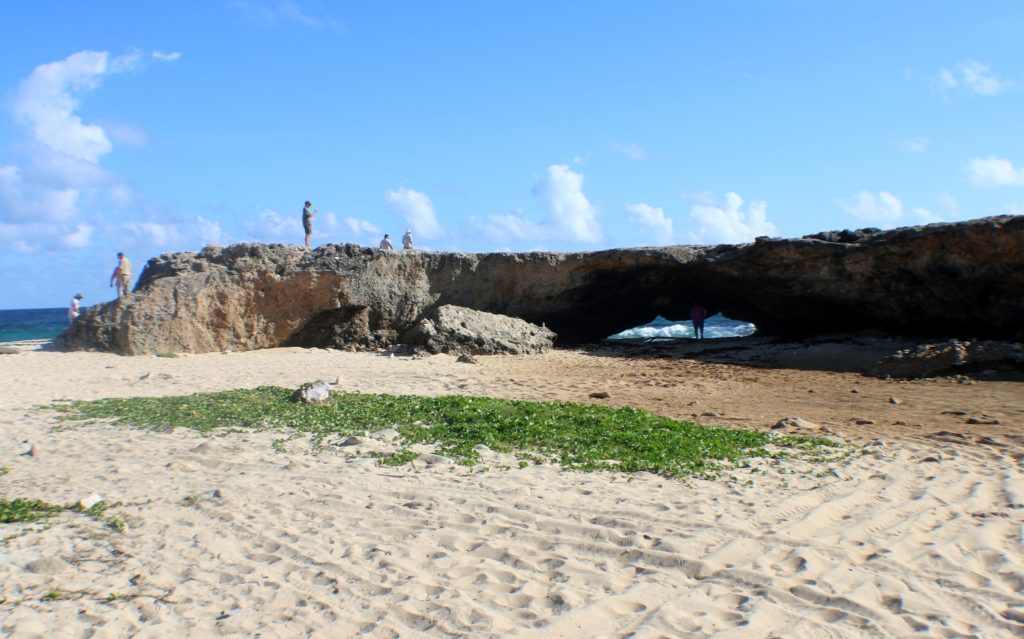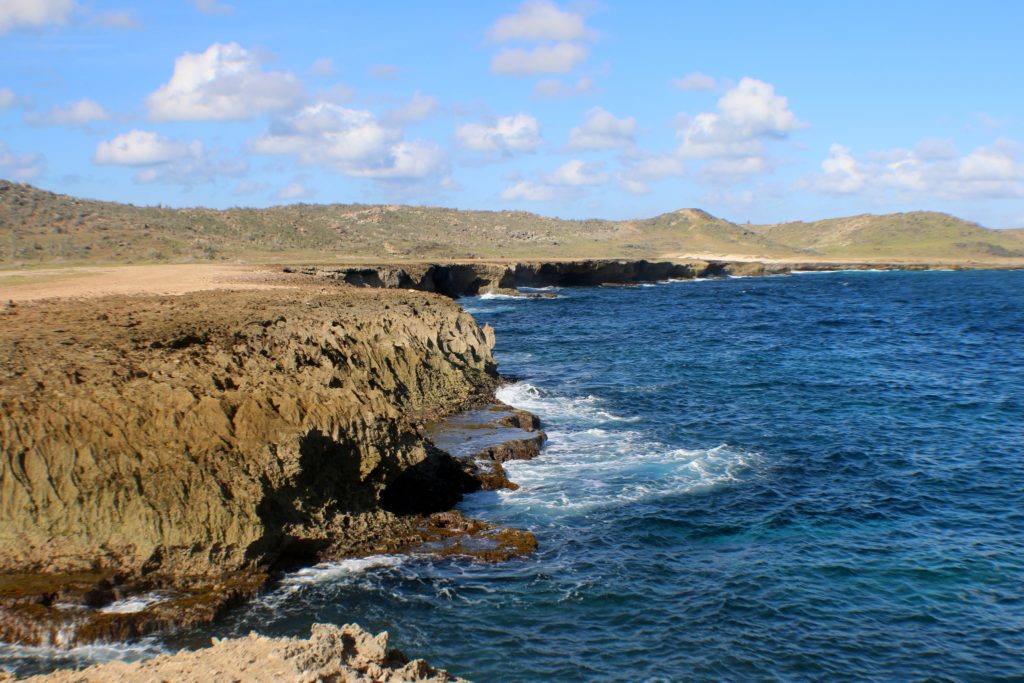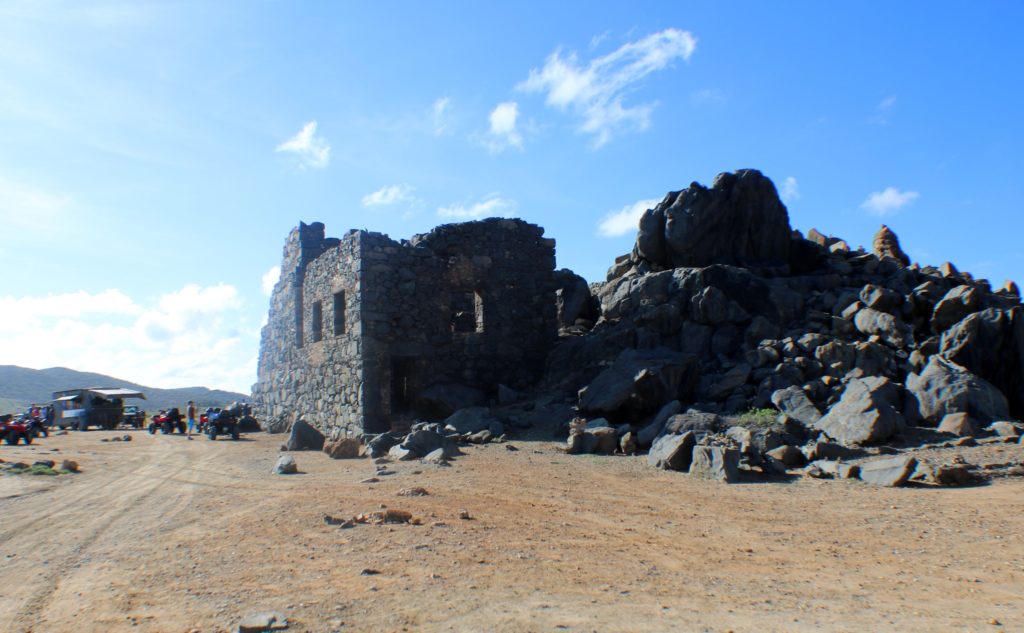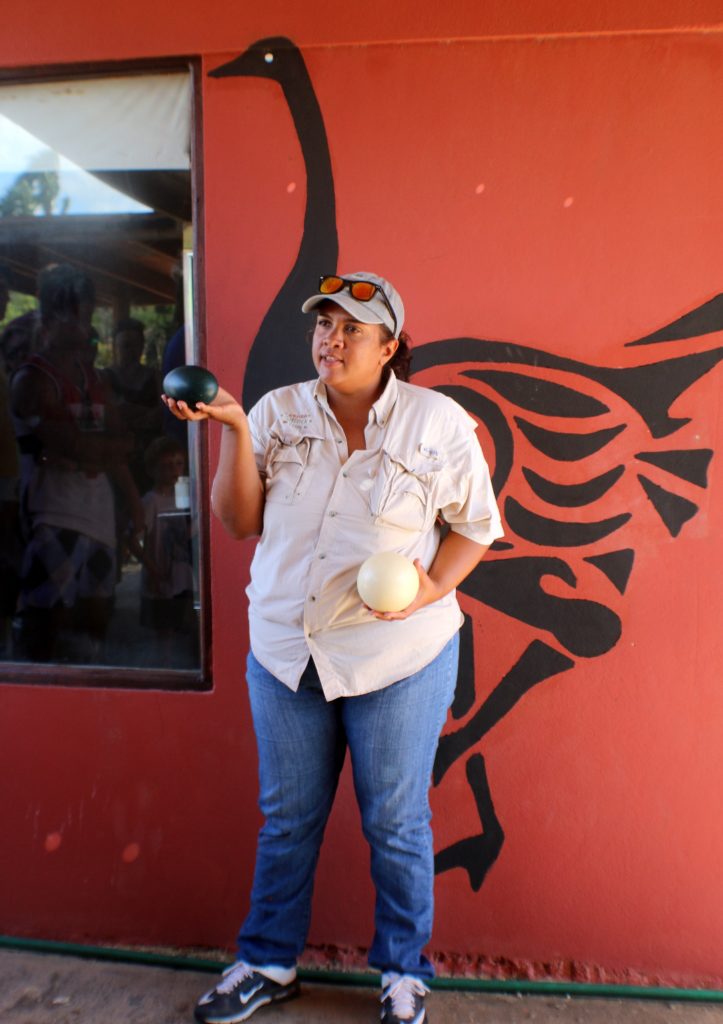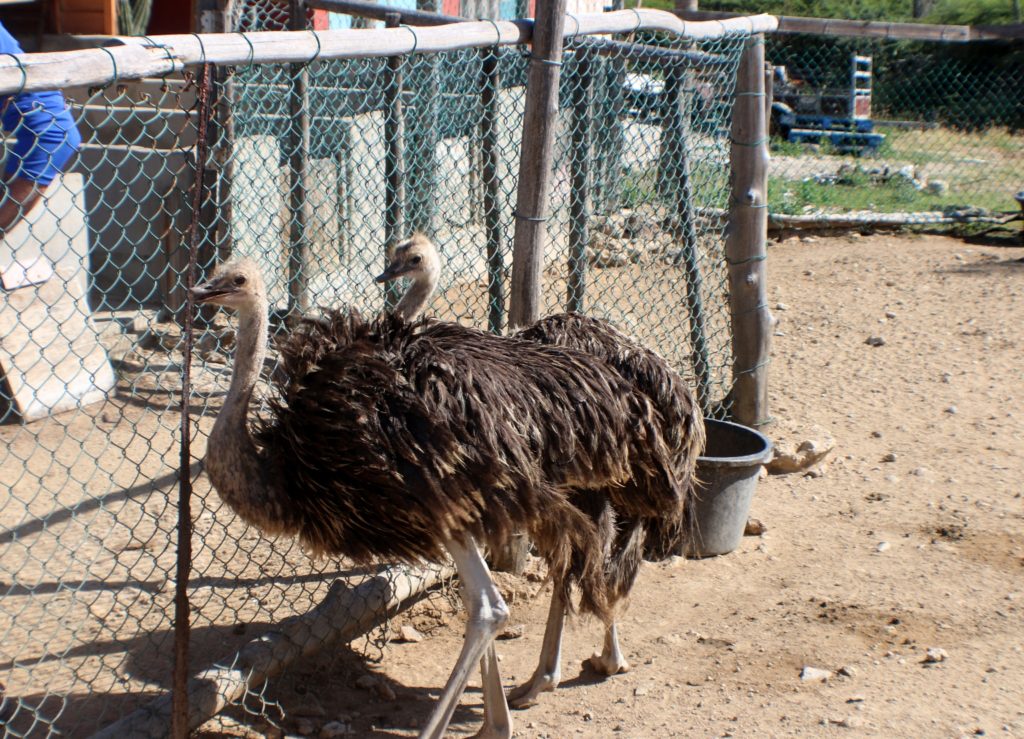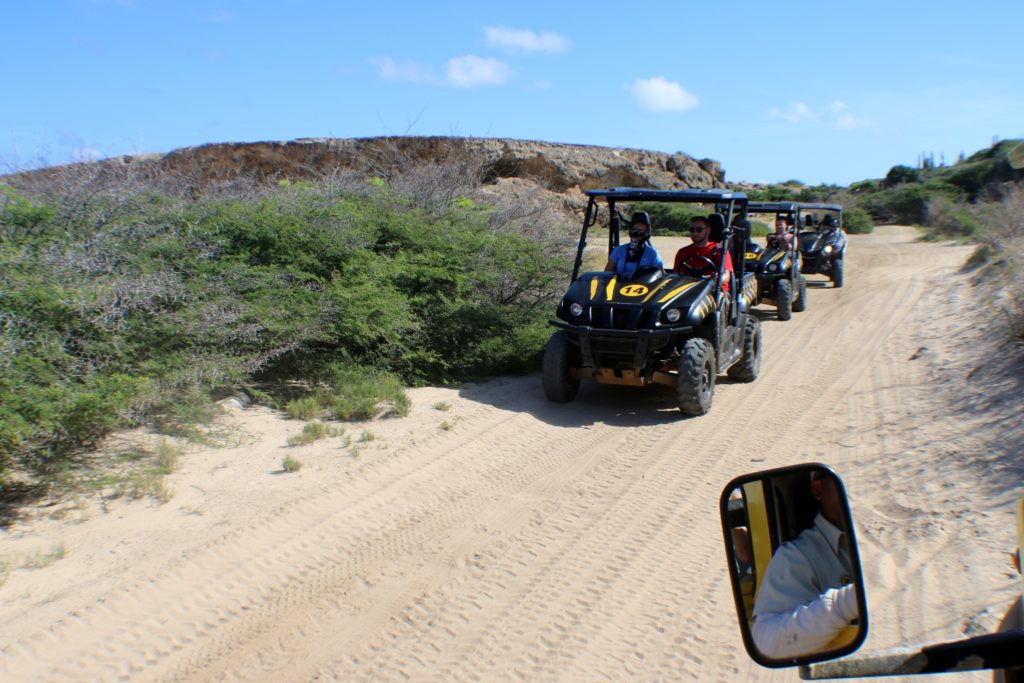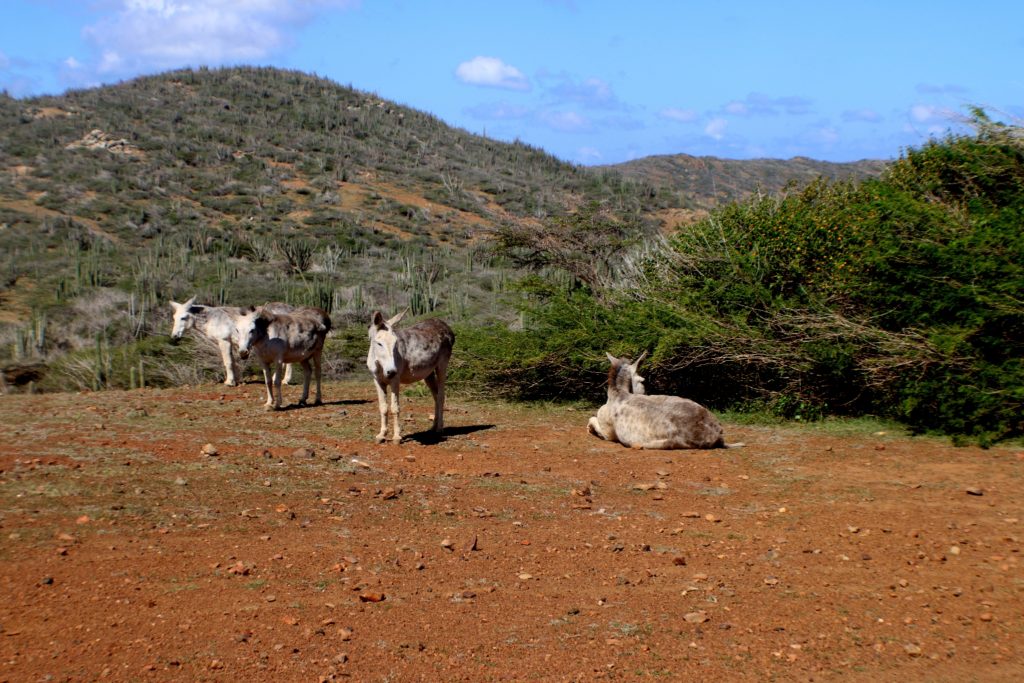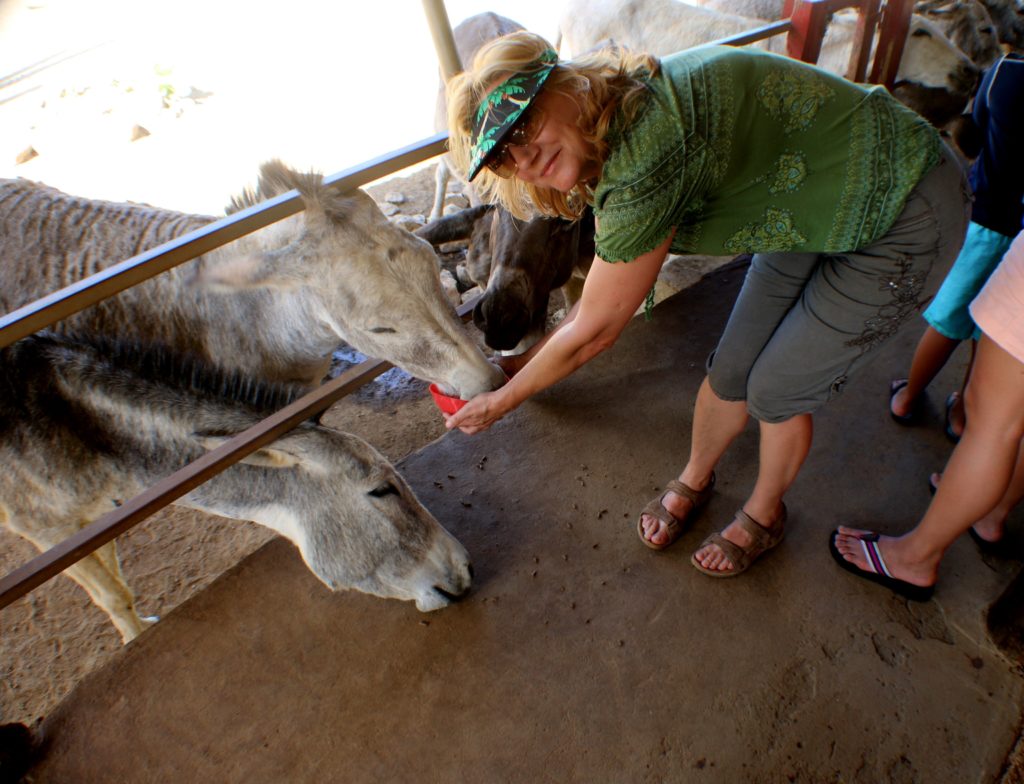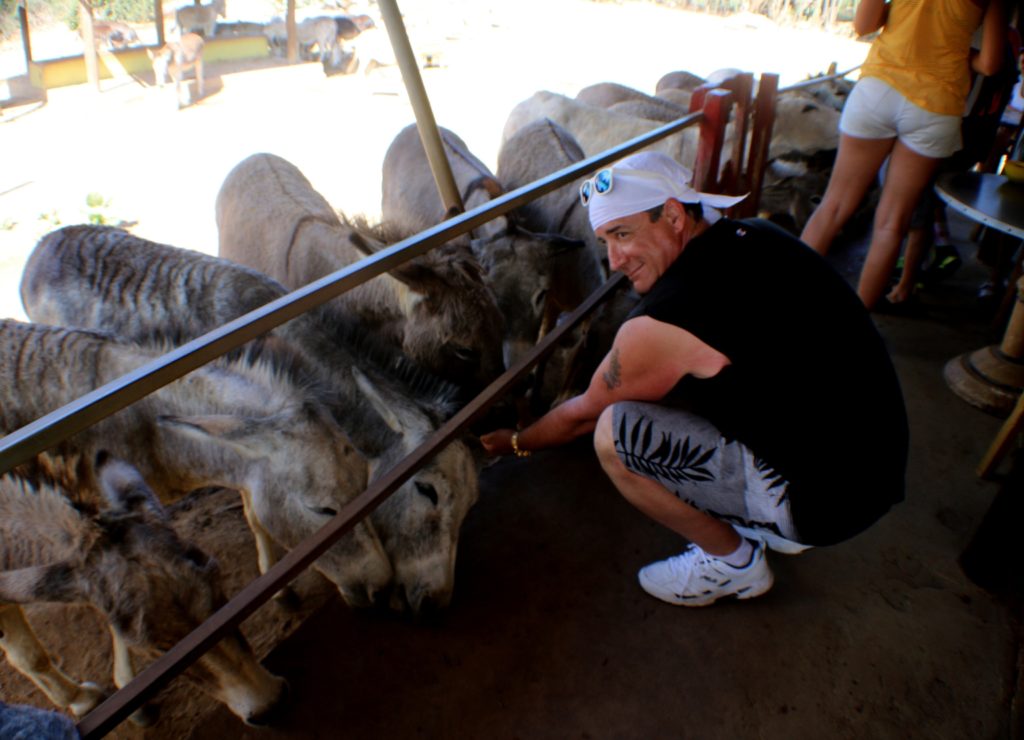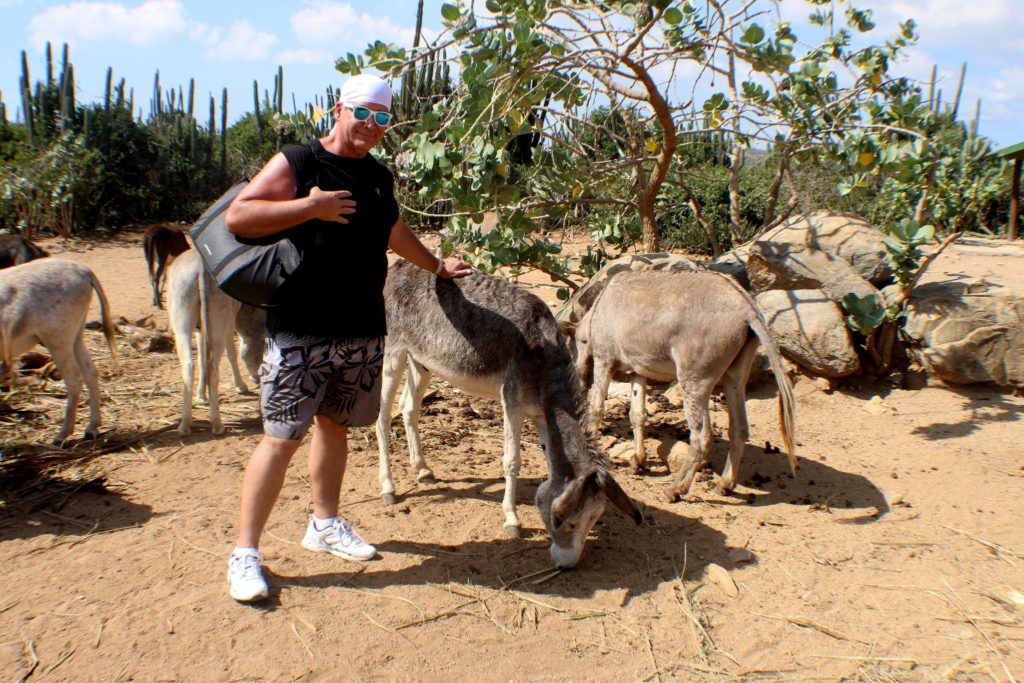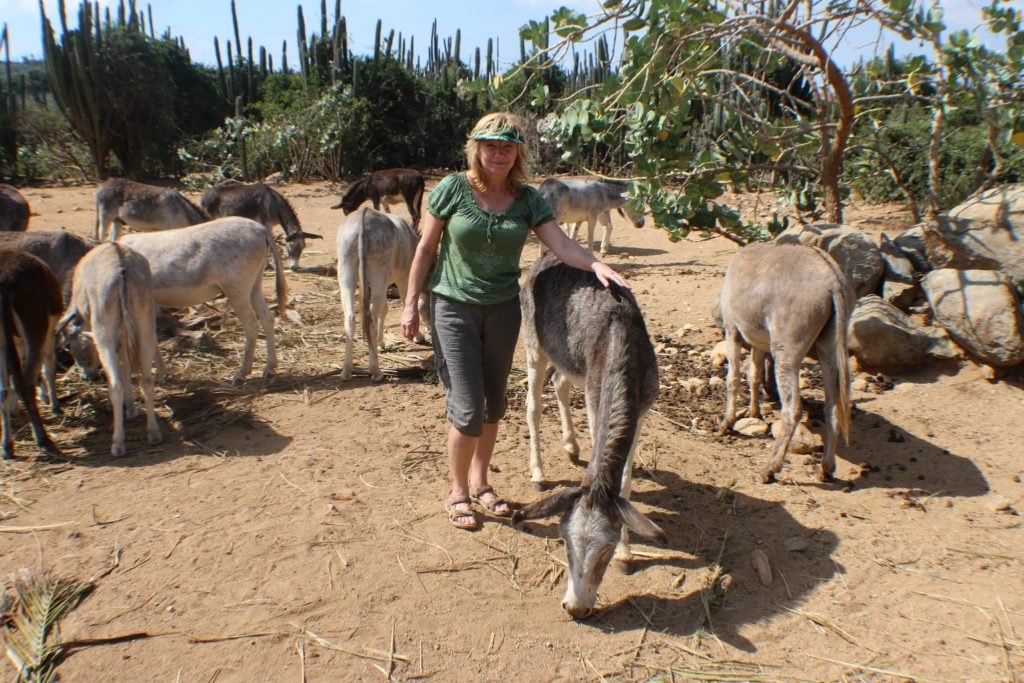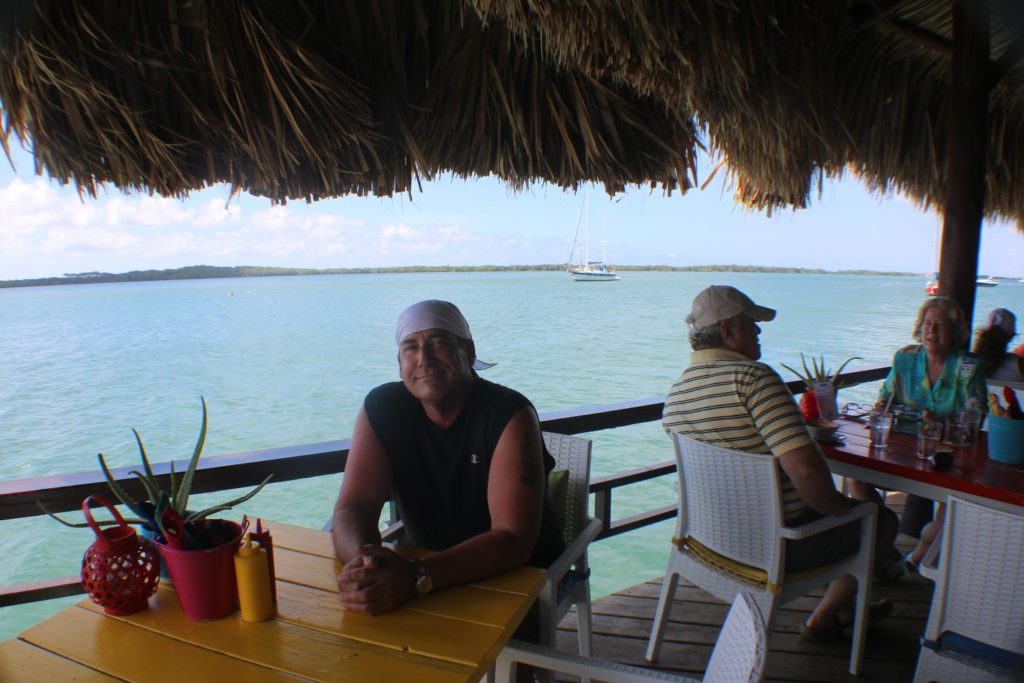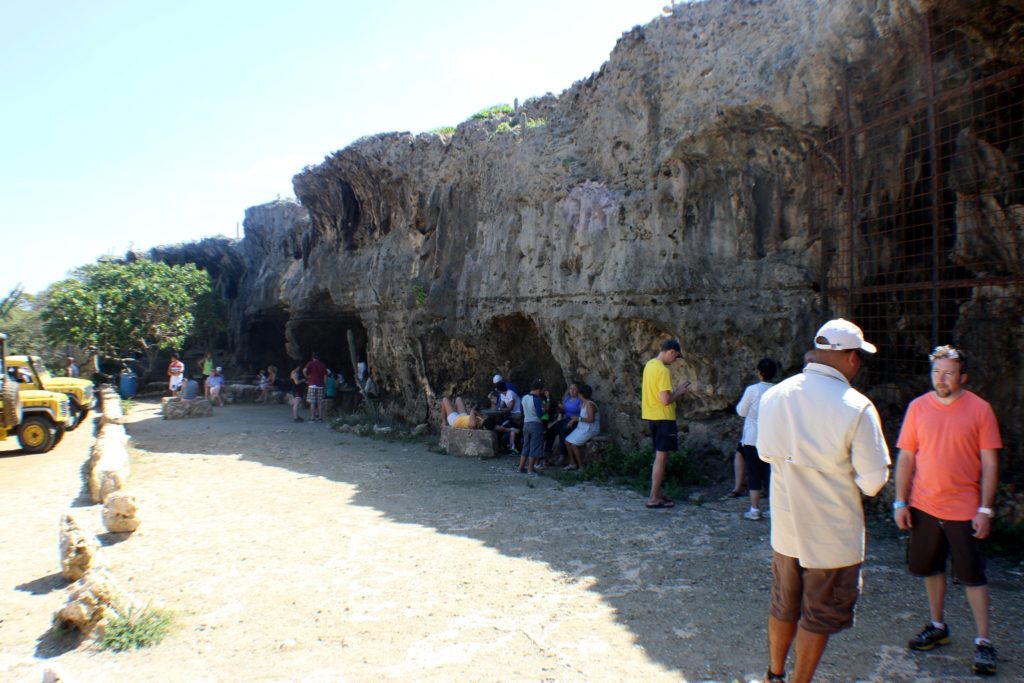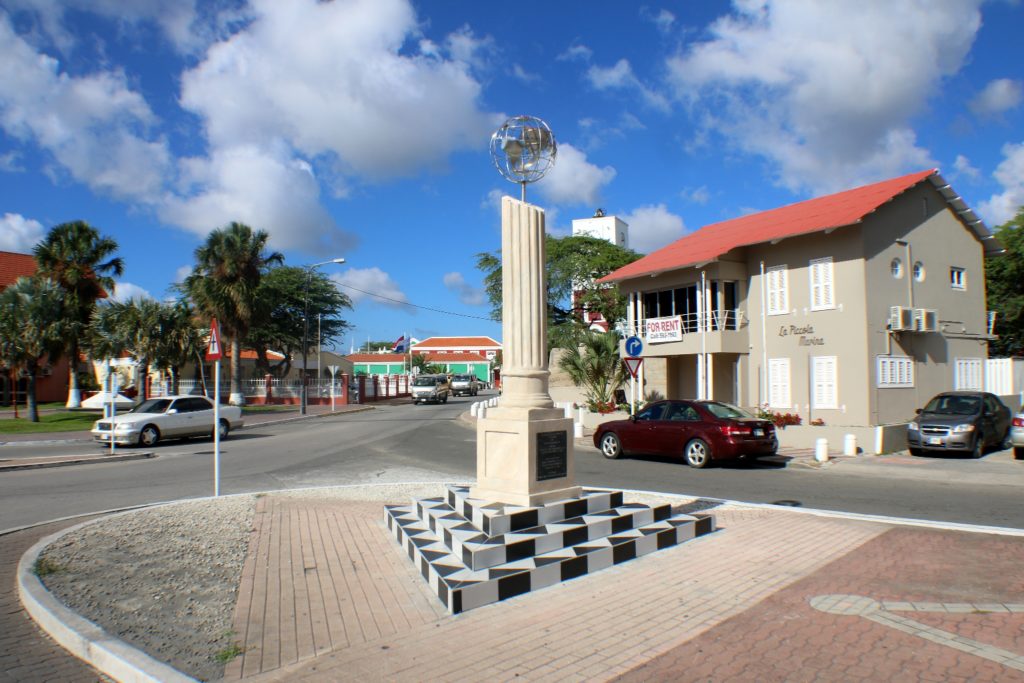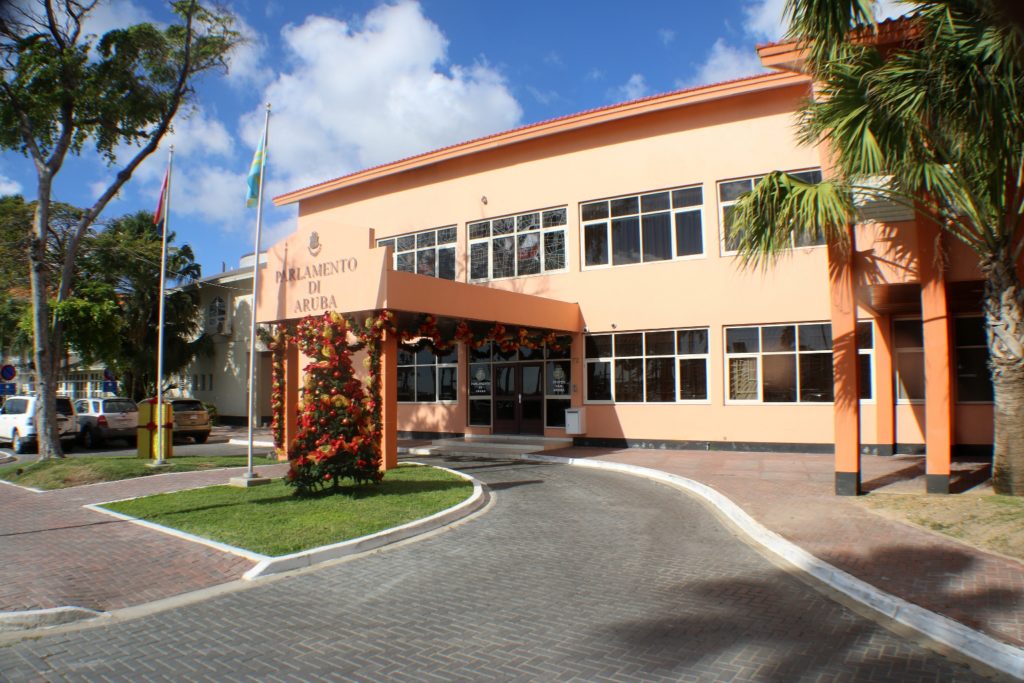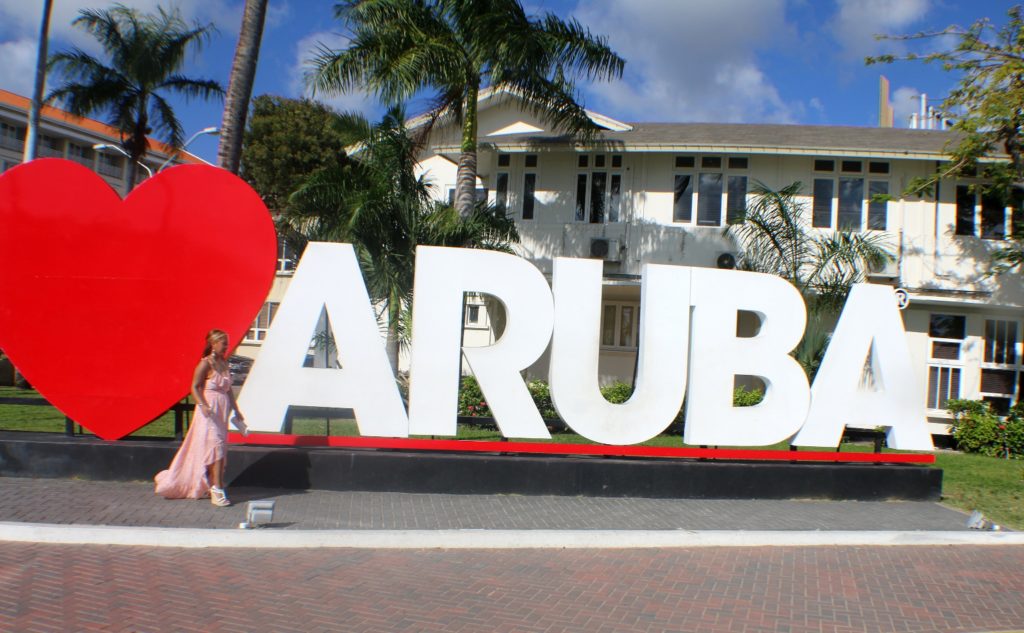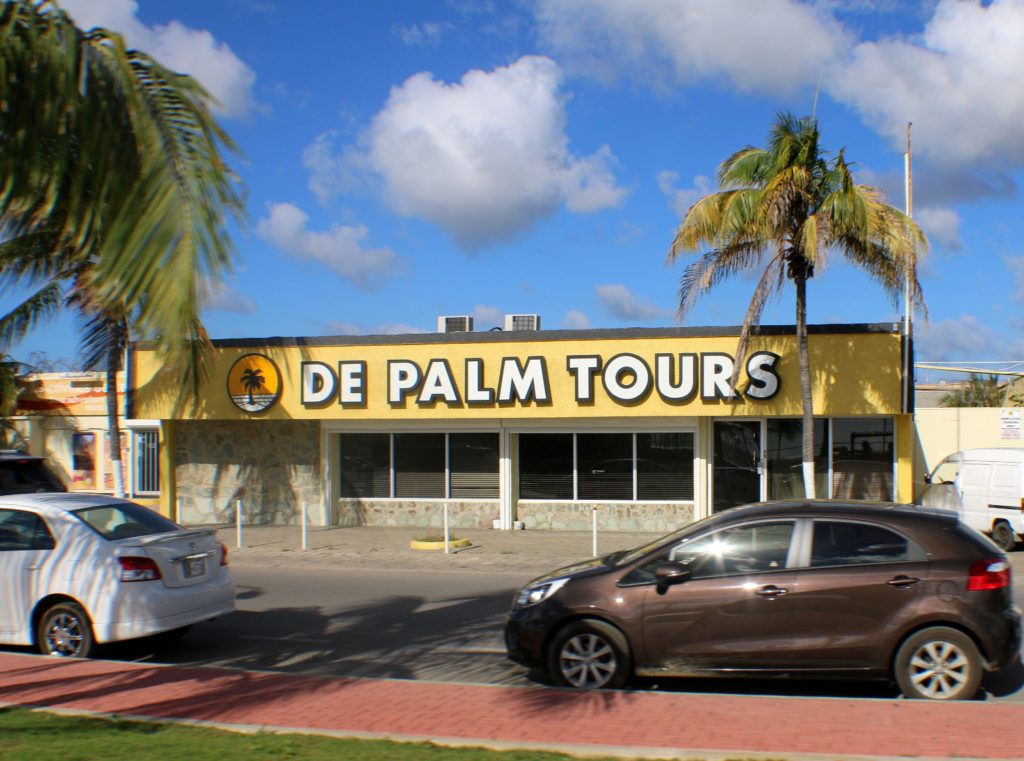We chose a 7 hour open-air Land Rover tour to experience the rugged Aruban outback. The jeep tour covers the Arikok National park, which is home to some of the Island’s hidden treasures. At the end of the tour we were provided snorkeling gear to cool off at Baby Beach. The main tour sights include: Ostrich Farm, Donkey Sanctuary, Black Stone Beach, Fountain Cave at Arikok National Park and Baby Beach.
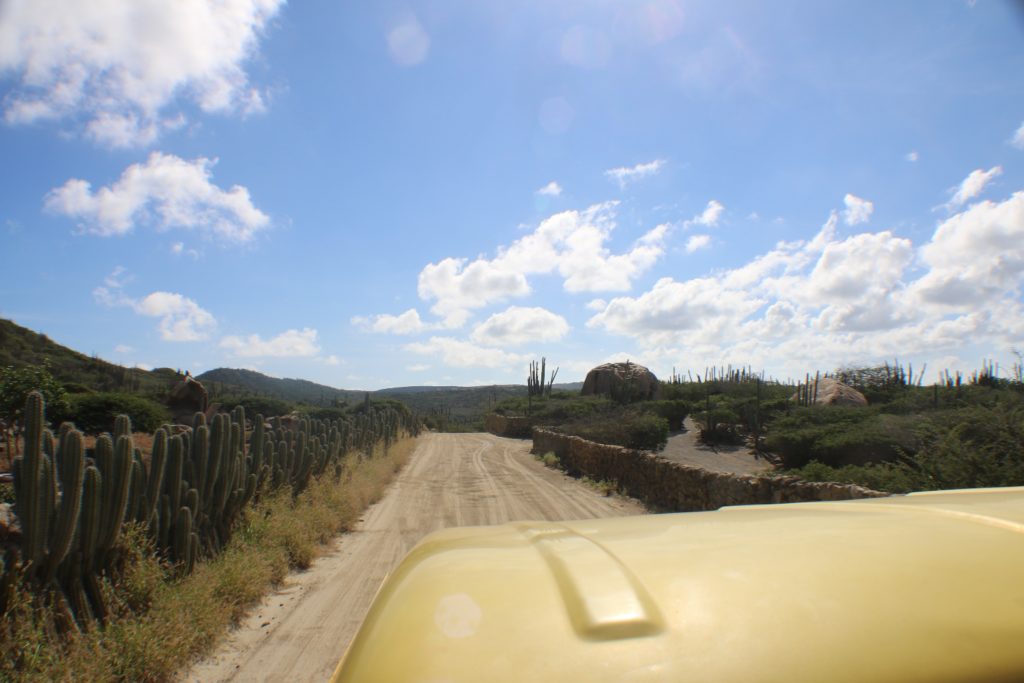
Alto Vista Chapel was our first sight. Meaning “high view,” Alto Vista was built in 1750 as the island’s first Roman Catholic Church. It’s still in operation today with regular services and also serves as the culmination point of the annual walk of the cross at Easter.
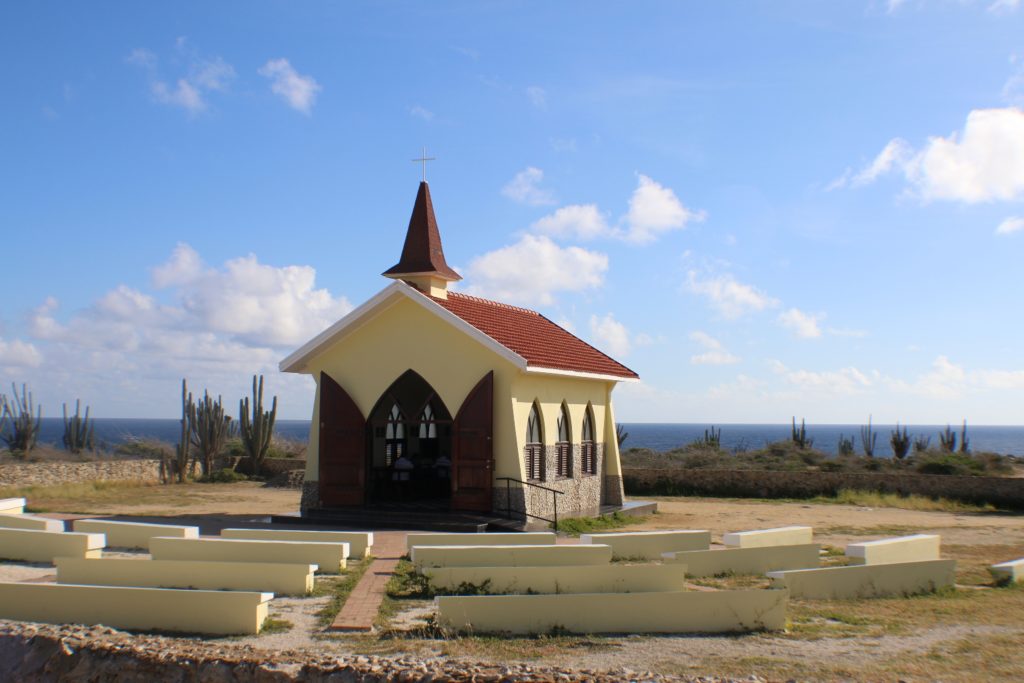
The ride was pretty bumpy since our jeeps drove on some dirt roads. We stopped at Wariruri Natural Bridge without leaving the vehicles, but we had a nice view of the bridge from the ground. The bridge is located at Wariruri Bay, between the Alto Vista Chapel, and Bushiribana ruins.
We didn’t stop at the collapsed Natural Bridge, which rose 23 feet above sea level and spanned more than 100 feet. On September 2 2005, the renowned Aruba natural bridge was destroyed by Mother Nature’s brute force. It was a very popular attraction visited by thousands of visitors to Aruba.
The other popular natural bridge nearby is Baby Bridge, but it can only be viewed from above, so we couldn’t see it.
Here is a cove near Wariruri Beach. The Northern rocky coastline of Aruba is covered by numerous coves like this one.
We saw some horseback riders nearby and waved to them.
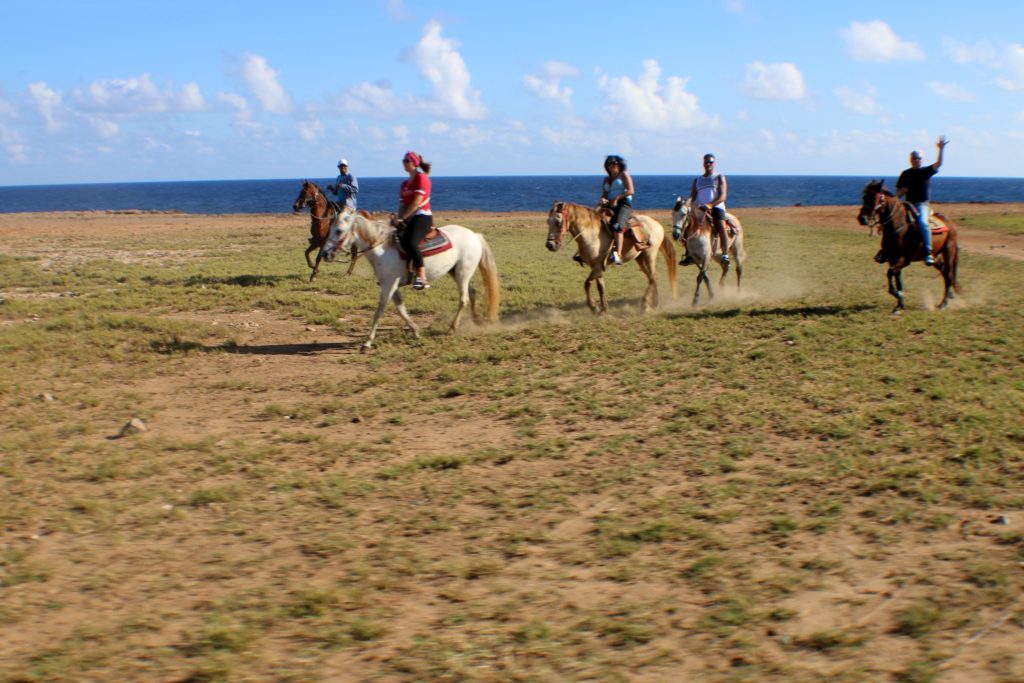
The Bushiribana Gold Mill Ruins are the remnants of a long-abandoned gold mill that processed gold ore during the Aruban gold rush in the nineteenth century. We just drove by the Bushiribana Gold Mill Ruins, didn’t stop there.
Our first stop was at the Aruba Ostrich Farm. Everything you ever wanted to know about the world’s largest living birds can be found at this farm. A large palapa (palm-thatched roof) houses a gift shop and restaurant. Tours of the farm are available every half hour. Here is the entrance to the farm.
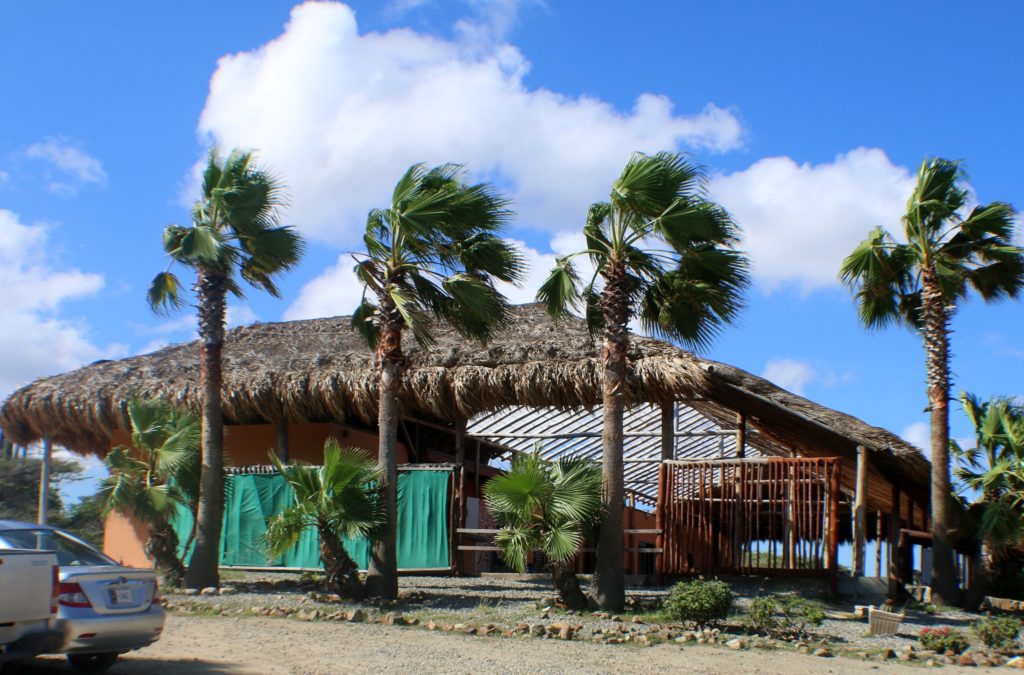
Our tour started right away. Emus were the first birds we saw.
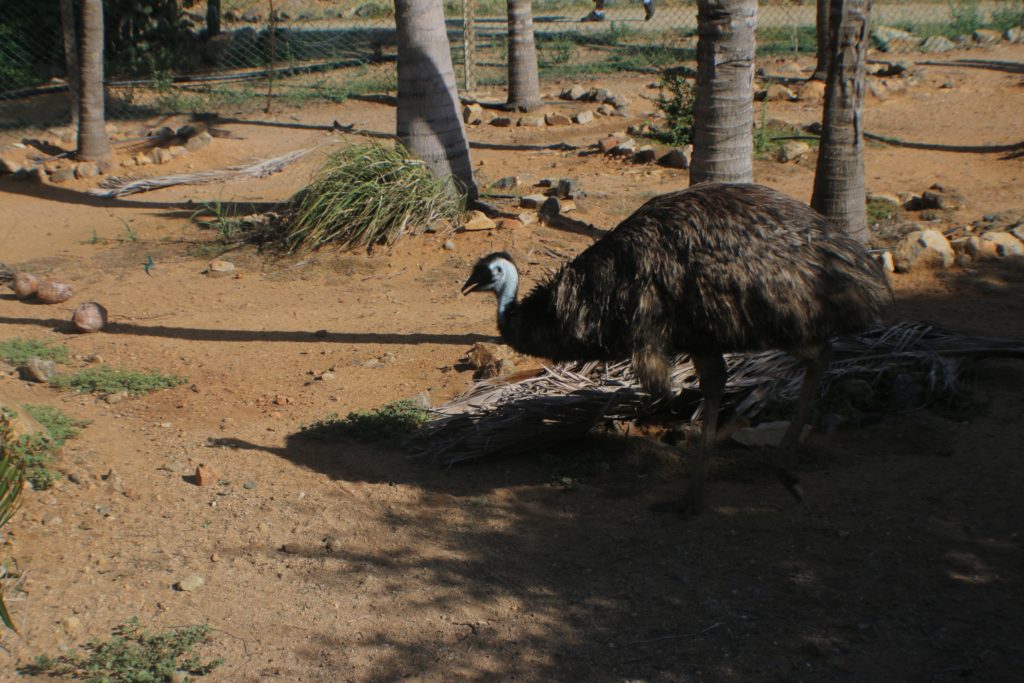
Here it looks like the emus are having a friendly conversation.
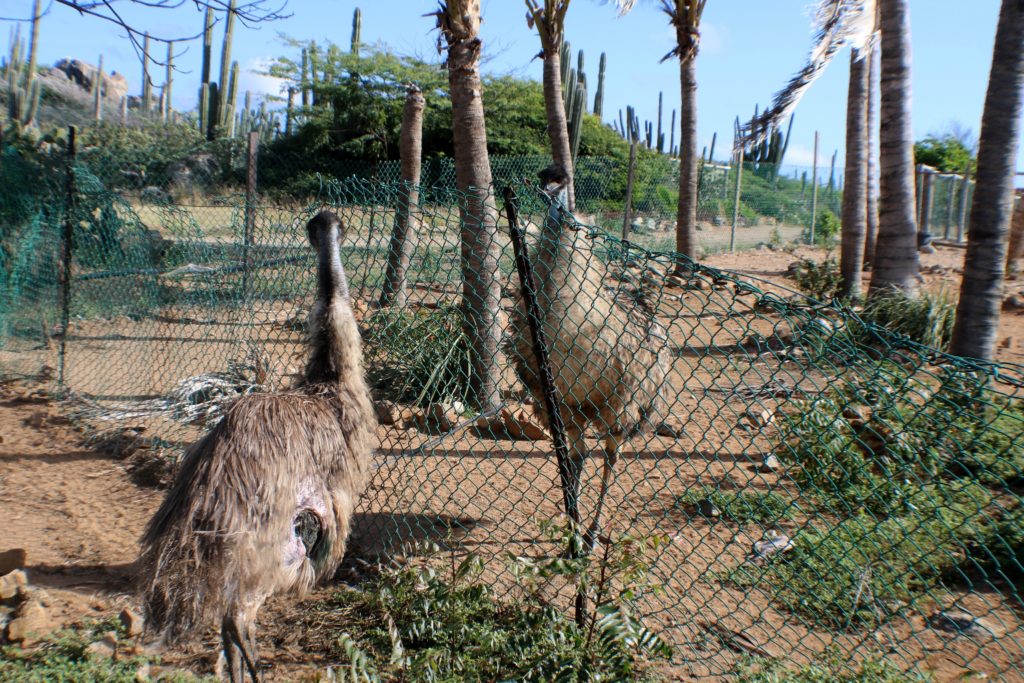
Ostriches are huge birds, like this one.
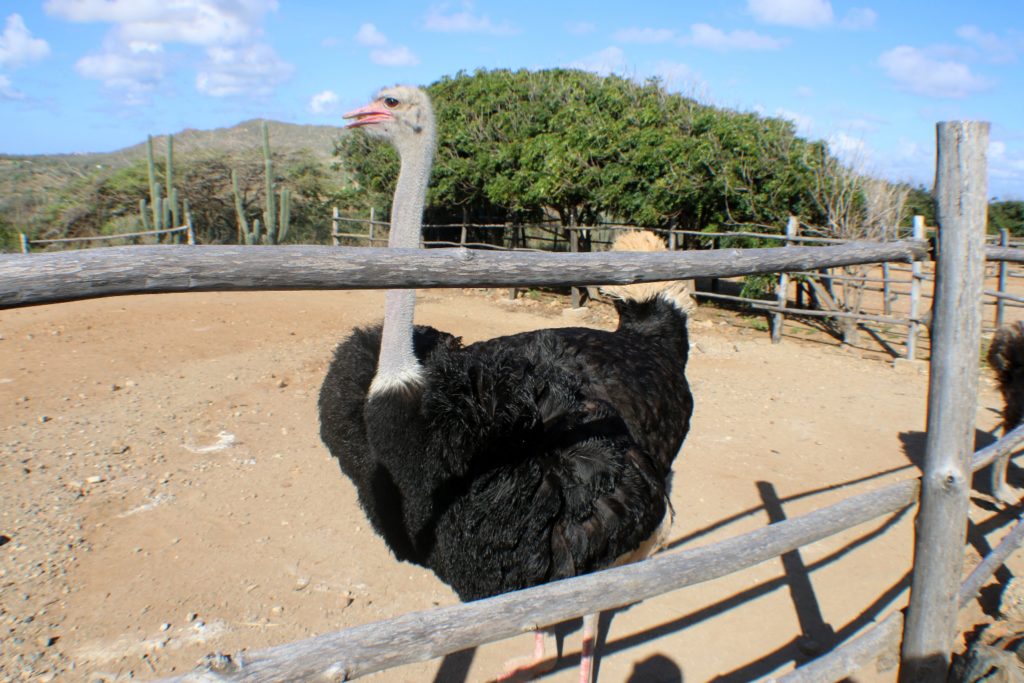
These two look like ballet dancers. 🙂
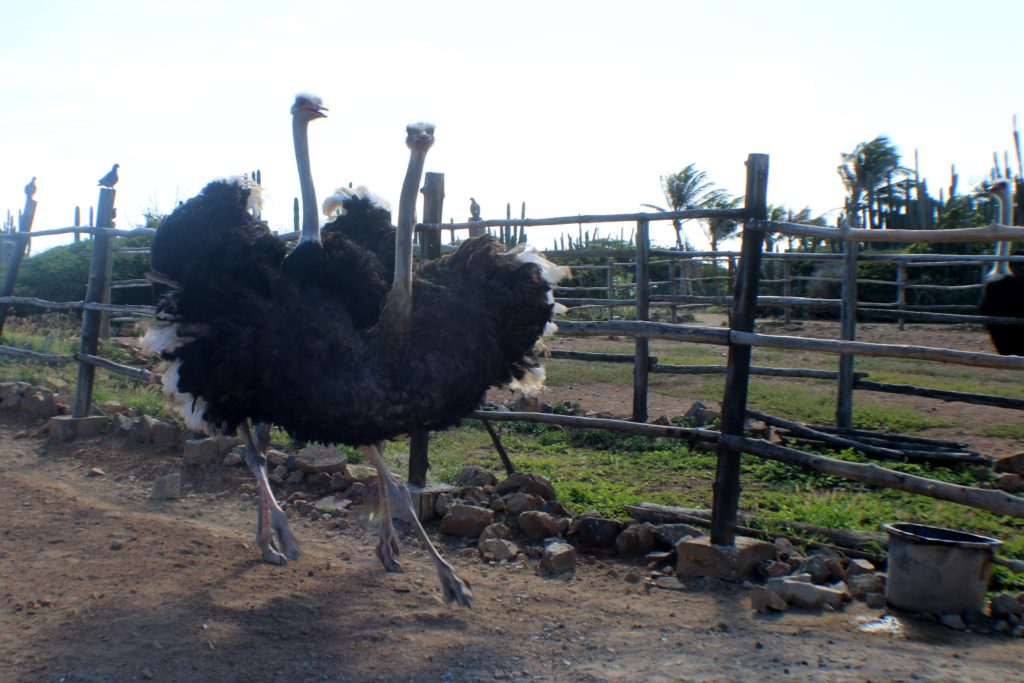
This ostrich is conversing with Dave. 🙂 They both are almost the same height. Dave is about 6 ft.
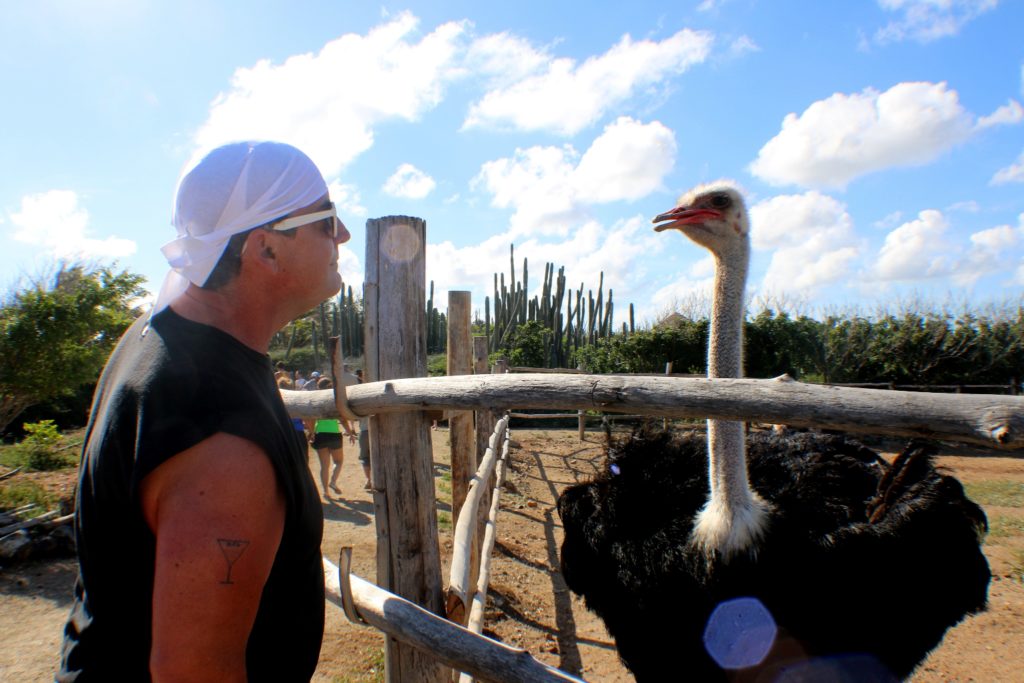
The farm had a very engaging local guide. Here our guide informs us about the ostrich eggs. Those are fake ones.
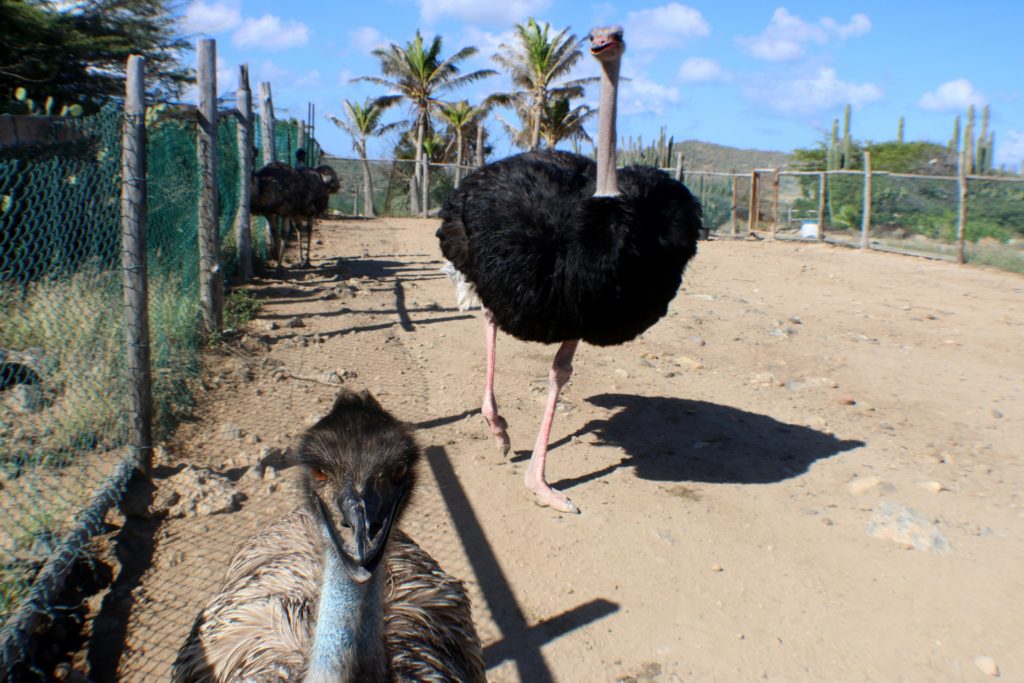
This one is definitely irritated with something. 🙂
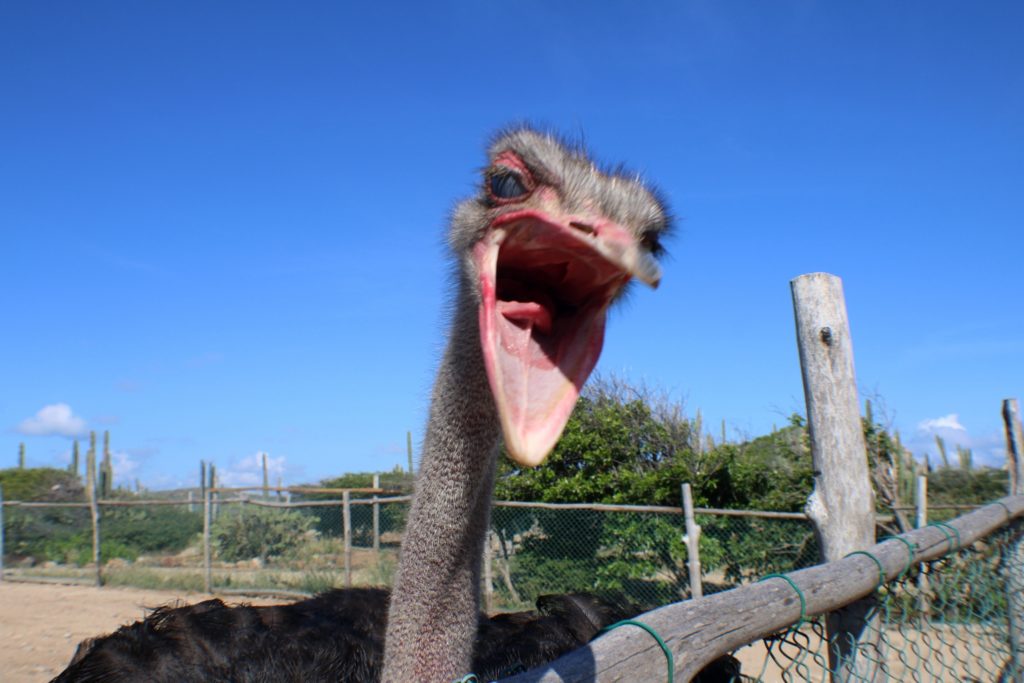
The highlight here was feeding the ostriches for the photo op.
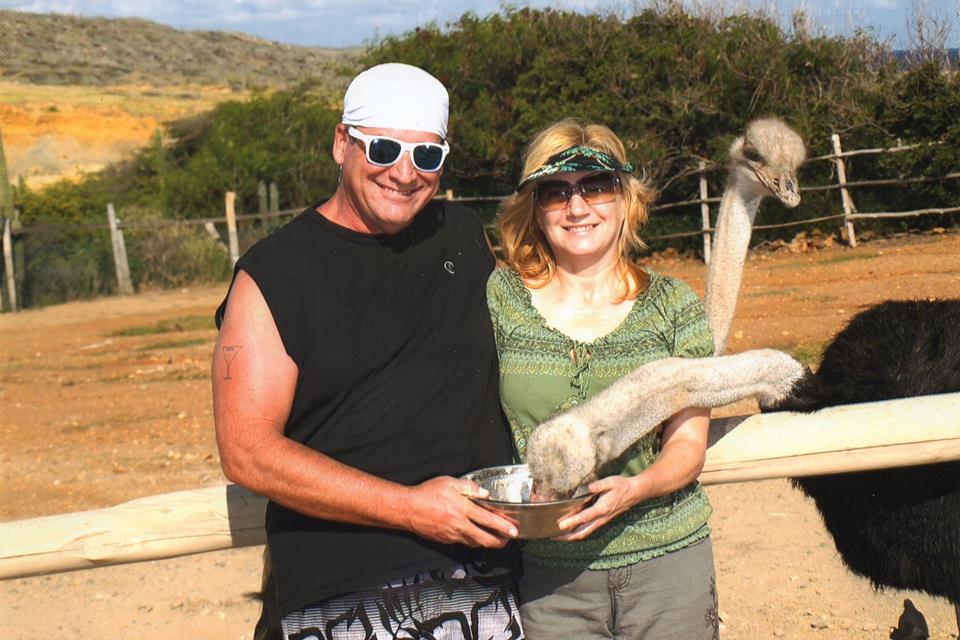
There are some nice views from the farm.
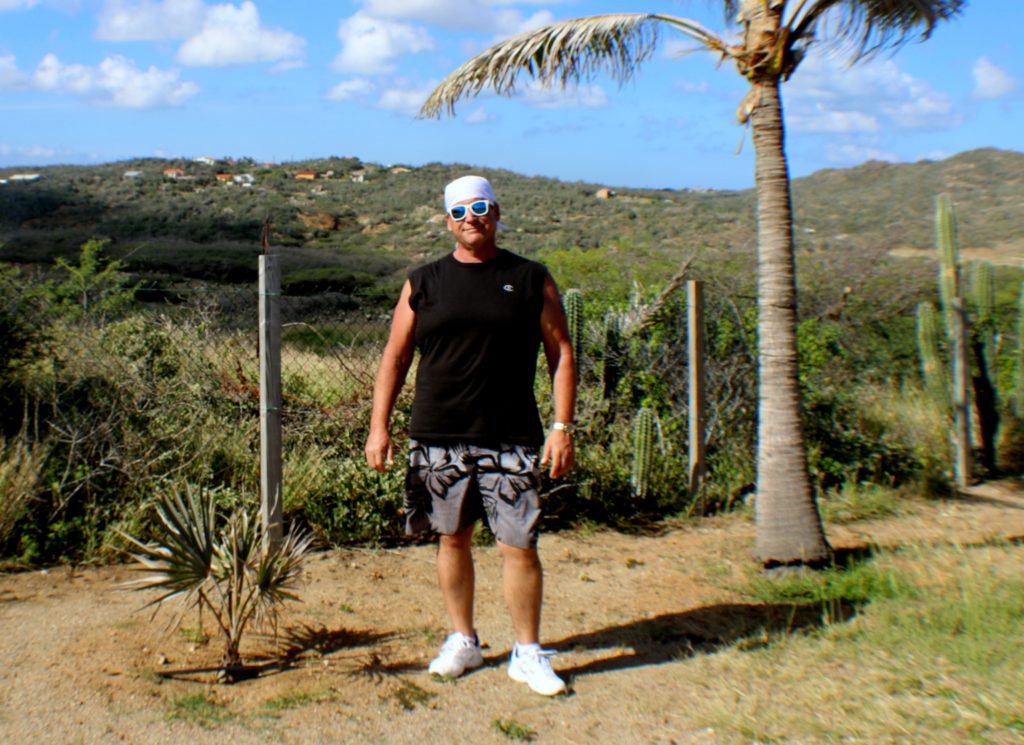
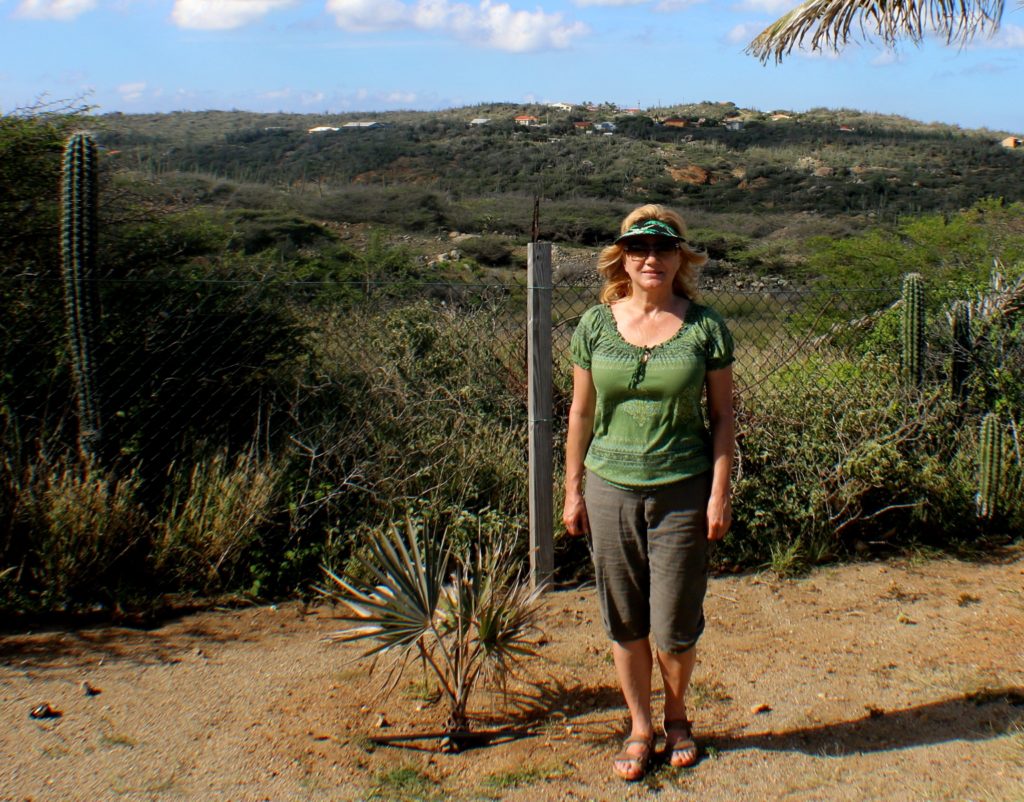
The end of the tour. Dave with our local tour guide.
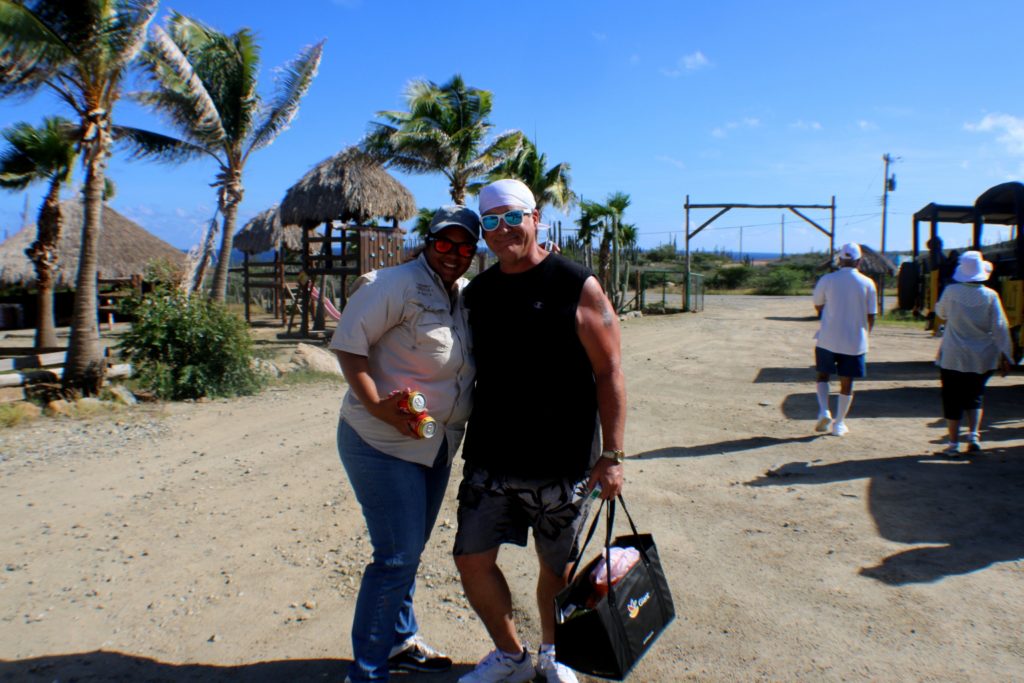
Getting back in our jeeps. Next stop is Black Stone Beach.
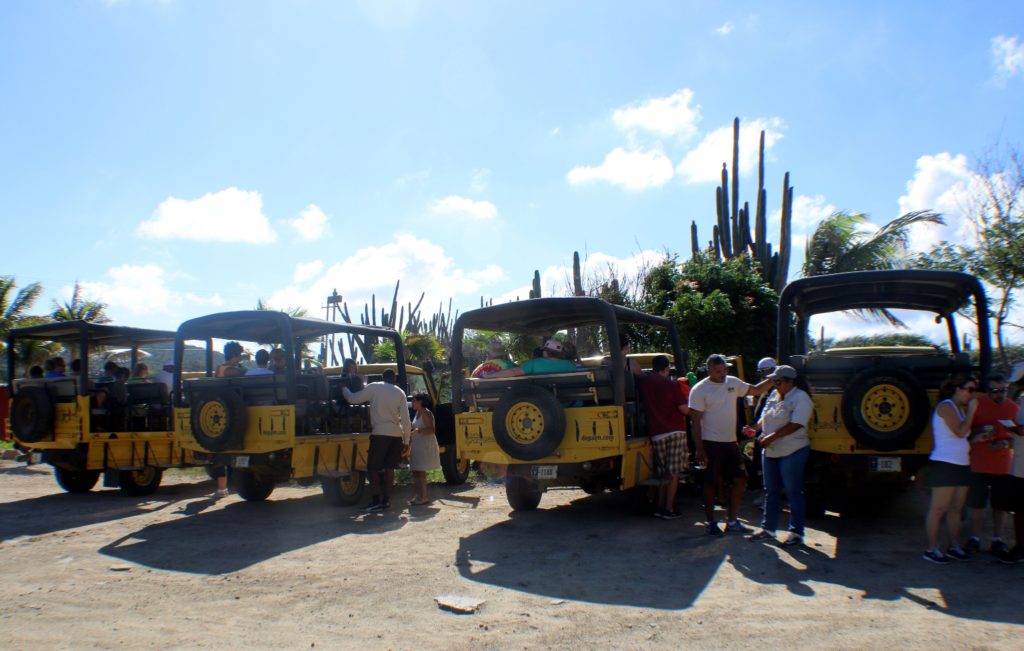
Yielding to a UTV tour. The roads here are narrow.
Andicuri Beach is definitely one of the most beautiful and secluded beaches on the east coast of Aruba. This beach has a beautiful landscape and very clear water that is always moving because of the constant waves entering the cove.
Andicuri Beach is a perfect spot for bodyboarding and kitesurfing. Swimming or snorkeling is not recommended as the waves and currents are just too strong. The ledges at the sides of the cove offer some shade, which is nice, because there are very few places in the park that can protect you from the sun.
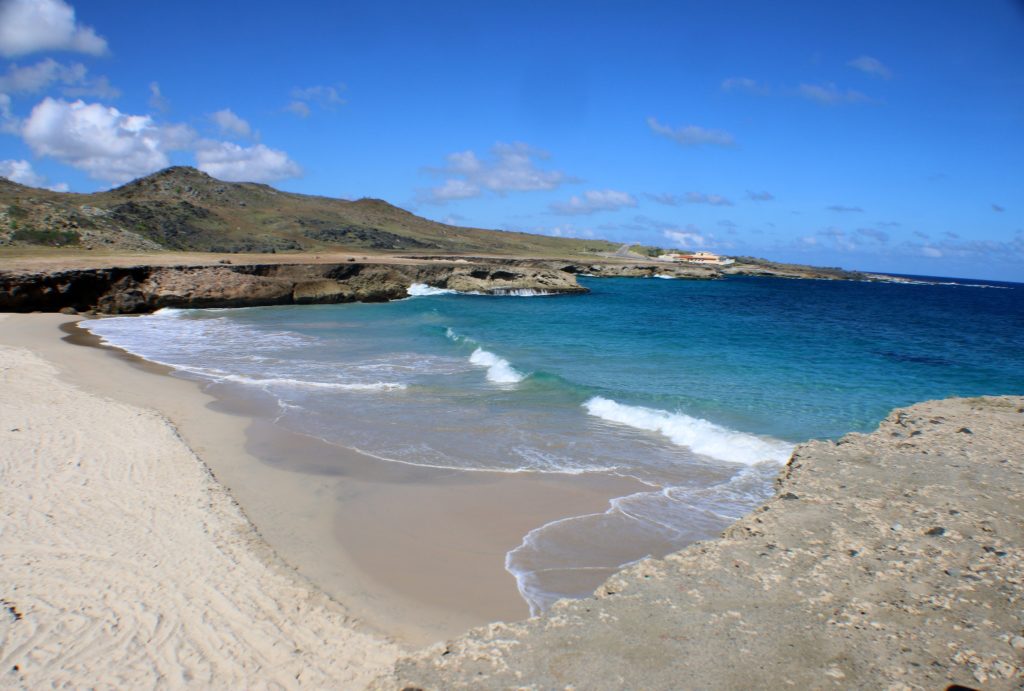
Then, we stopped at a very scenic natural bridge stone formation – Black Stone Beach on the North coast of the rough East side of Aruba. Lined with small and shimmery eroded black stones, Black Stone Beach is the only beach in Aruba boasting “black sand”. Erosion by the water not only created black pebbles but also rather sharp and edgy rocks that both characterize this location. Black Stone Beach is a place, where we saw a unique Triple Natural Bridge or tripod bridge.
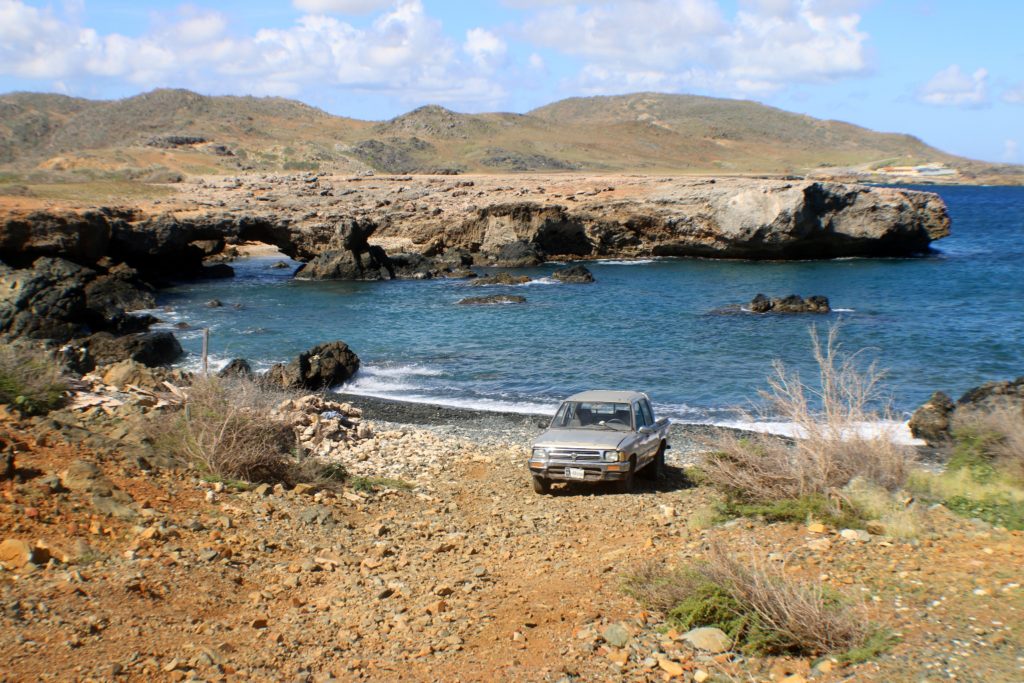
We just walked along the beach exploring the nearby surroundings.
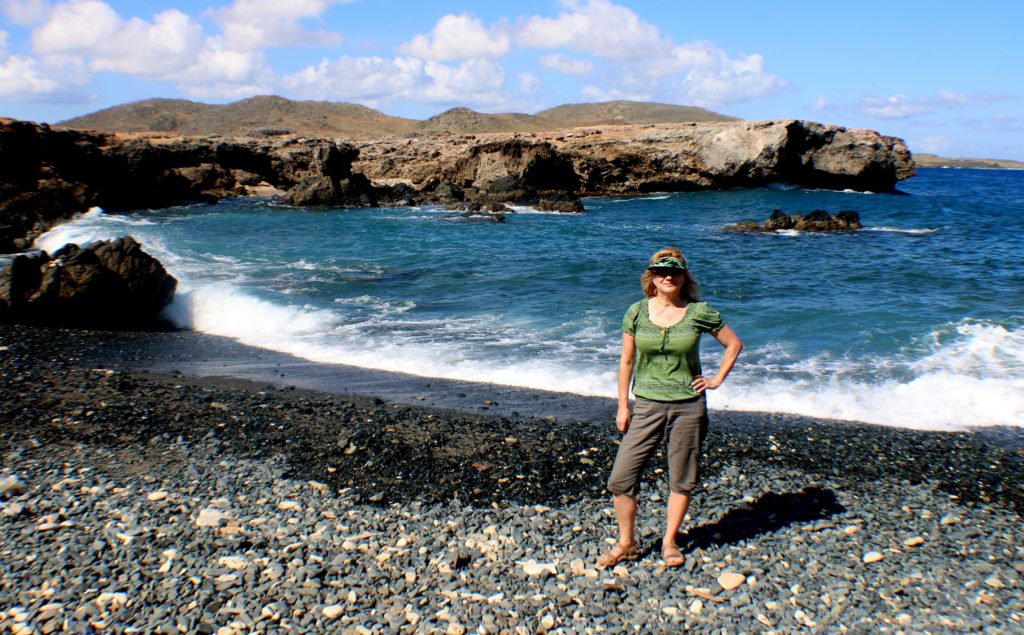
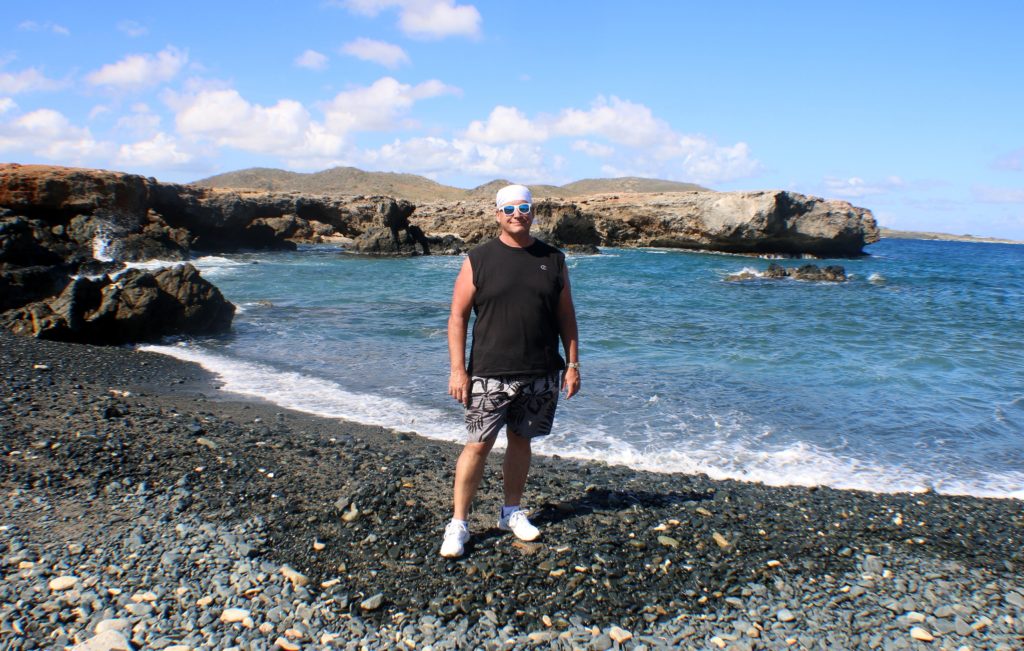
This rock was constantly being beaten by crashing waves.
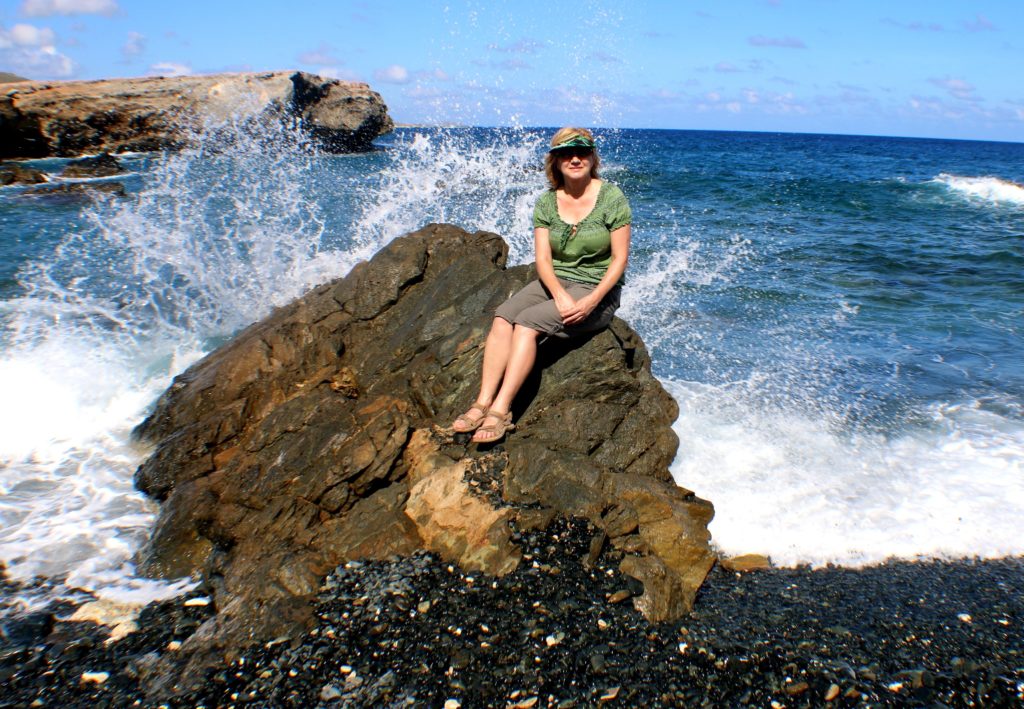
Getting ready for the road to the Donkey Sanctuary.
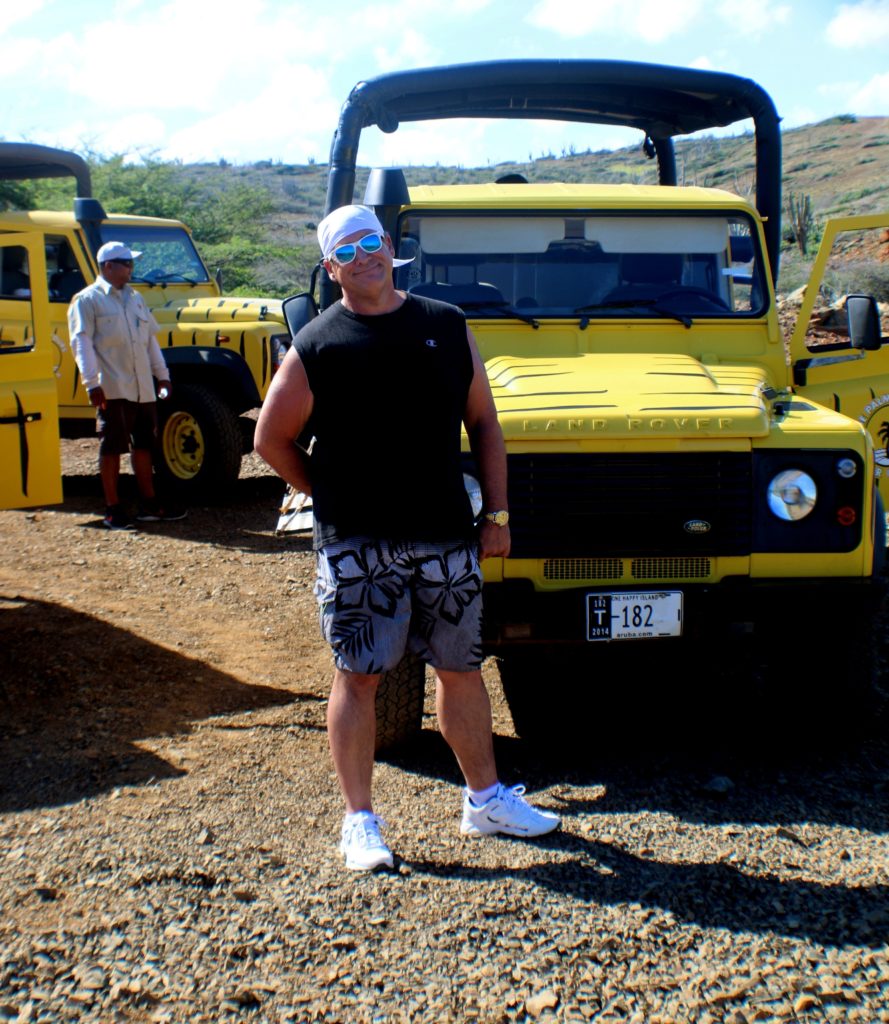
We saw some wild donkeys on our way to the donkey sanctuary.
The Donkey Sanctuary Aruba was founded in 1997 as a non-profit organization with the clear purpose to save the donkeys that populated the island of Aruba. Here is the History of the Donkey in Aruba from the brochure, which I found pretty interesting.
“During the colonial era, the donkey was brought to the island by the Spanish to fulfill all kinds of purposes. However, the donkey became a beast of burden because the animal was mainly used for transportation of humans but also for all kinds of rather heavy stuff. When their usefulness ended after the introduction of other types of transportation, they where released of their duties and forced to provide for themselves. Many donkeys were set free to go live in the wild.
The population of the donkey increased over time and eventually the donkeys became a nuisance because there were just too many occupying the island. It is said that their population grew well to over a 1000. People decided to shoot them, feed them to other animals with the sole purpose to decrease the population. The donkey also became a real problem for traffic, especially during the night. Many donkeys got hit by cars, buses and trucks when they were walking or just standing on dark roads. As a result, the donkey population decreased. Some 40 years ago the population got hit by a rapidly spreading disease and the donkey almost vanished from the island. Only a small group survived.
At that time, a movement of volunteers stood up and began to save and take care of the Aruban donkeys. This movement realized very well that the donkey had to survive on Aruba since the animal already had been on the island for almost 500 years! Today, the humble non-profit Donkey Sanctuary Aruba provides food, shelter, and medical care to almost two hundred animals. They even get a name when they arrive. Visitors can feed and pet the donkeys, and locals are encouraged to adopt them.”
The sanctuary sells donkey food. The highlight at the donkey sanctuary was feeding the donkeys.
Right after the donkey sanctuary, we had a delicious lunch in an authentic Aruban restaurant.
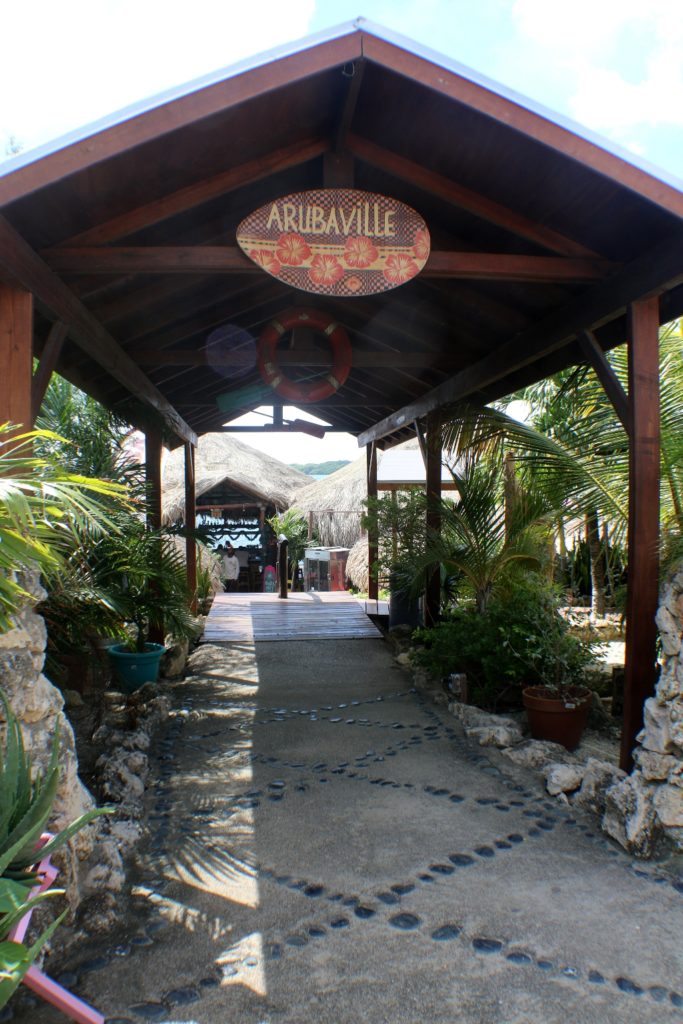
The restaurant is located right on the water. However, there were a lot of flies near the water.
From here, we traveled back into Arikok National Park, where we stopped for the guided Fountain Cave tour.
Fountain Cave is an important archeological site. Inside, the cave features many Indian rock drawings that date all the way back to the year 1000 (see picture below). This cave also features some more recent carvings that have been left behind in the early 1800’s by colonial visitors.
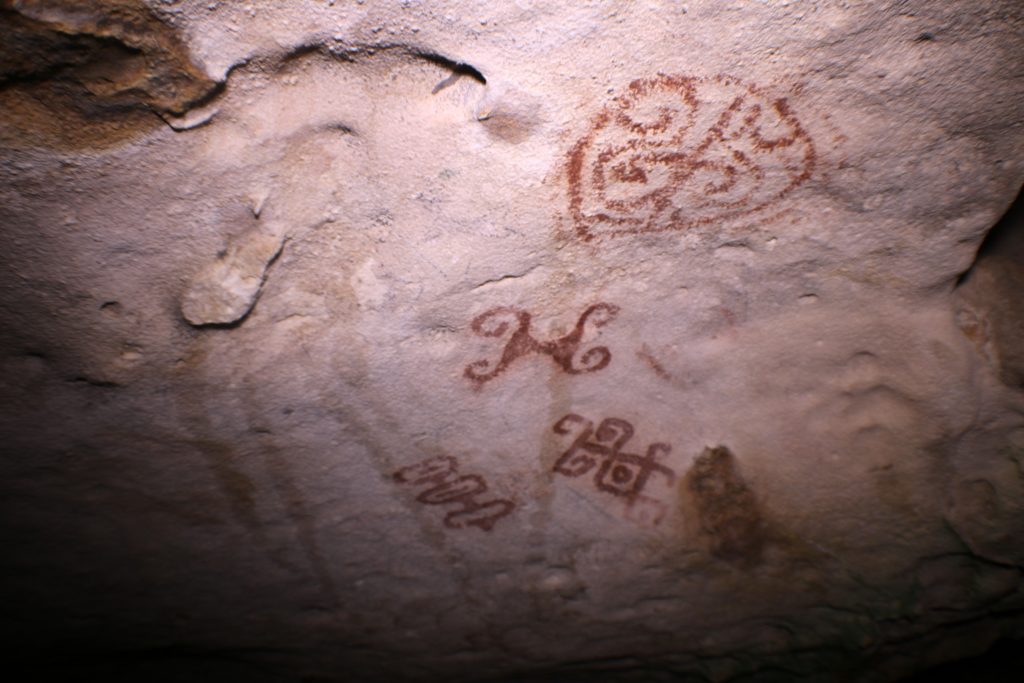
Fountain Cave is a limestone cave and a good example how limestone terraces were formed during geologically active periods.
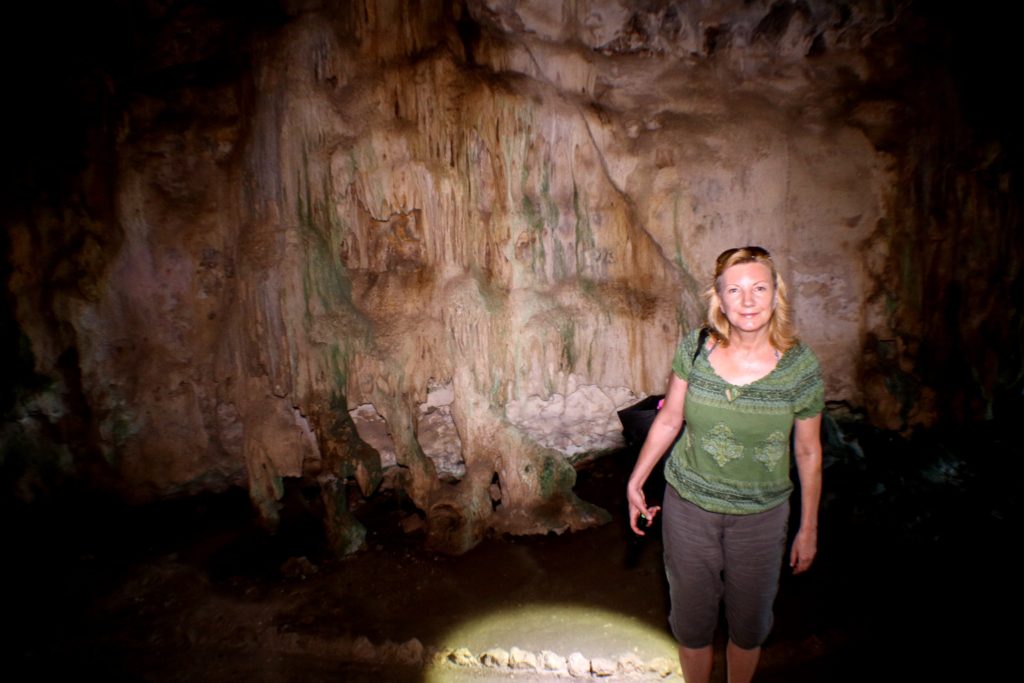
Bats make their home in the caves—nothing to worry about, they didn’t bother us, but it’s best to wear sneakers, because ground bugs can be bothersome. It was very dark in the cave. I am glad that Dave brought our own little flashlights, so we didn’t have to rely on the tour guide’s single flashlight.
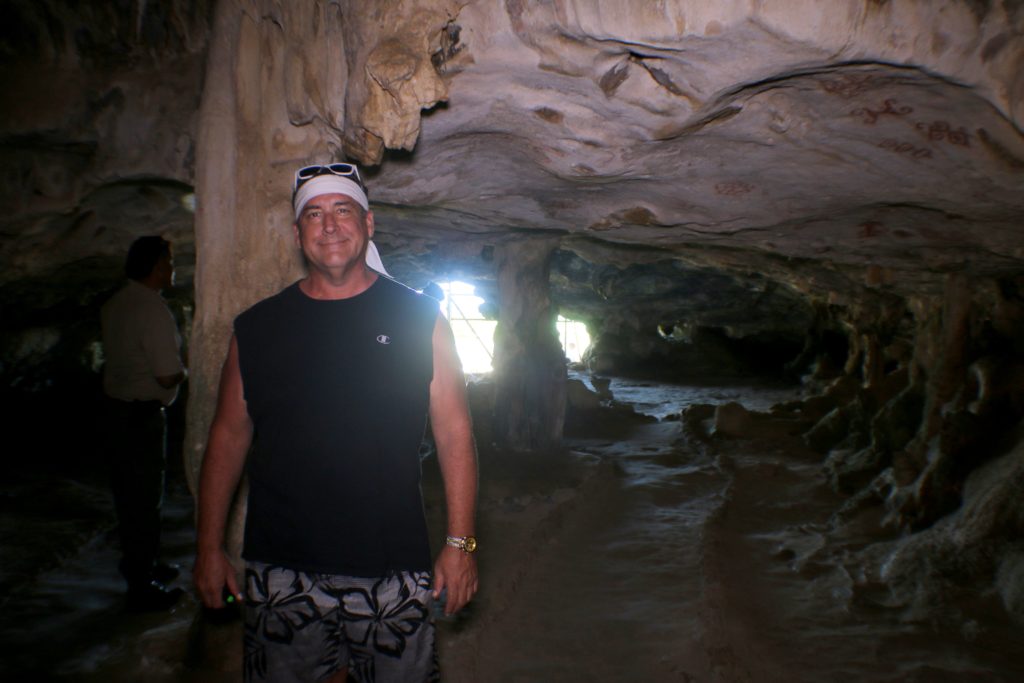
After the Fountain cave, our tour guide took us straight to Baby Beach on the far Southeast corner of the island.
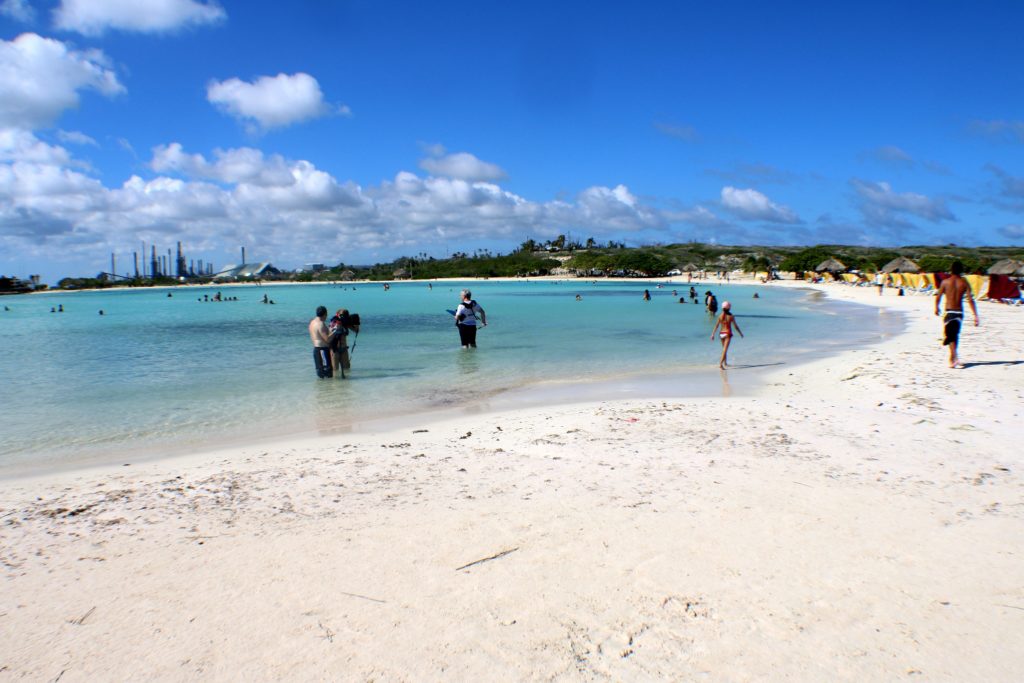
We had an option of swimming or snorkeling. We chose snorkeling. The instructor showed to us the best place to do that. There is a small coral reef basin at the sea’s edge, which offers superb snorkeling. However, the instructor warned us not to pass the barrier as the current is extremely strong outside of the rocks. The snorkeling was wonderful! We saw so many fishes. We visited Baby Beach several times during our stay in Aruba and we enjoyed this beach every time. The coral reef is on the left in the picture.
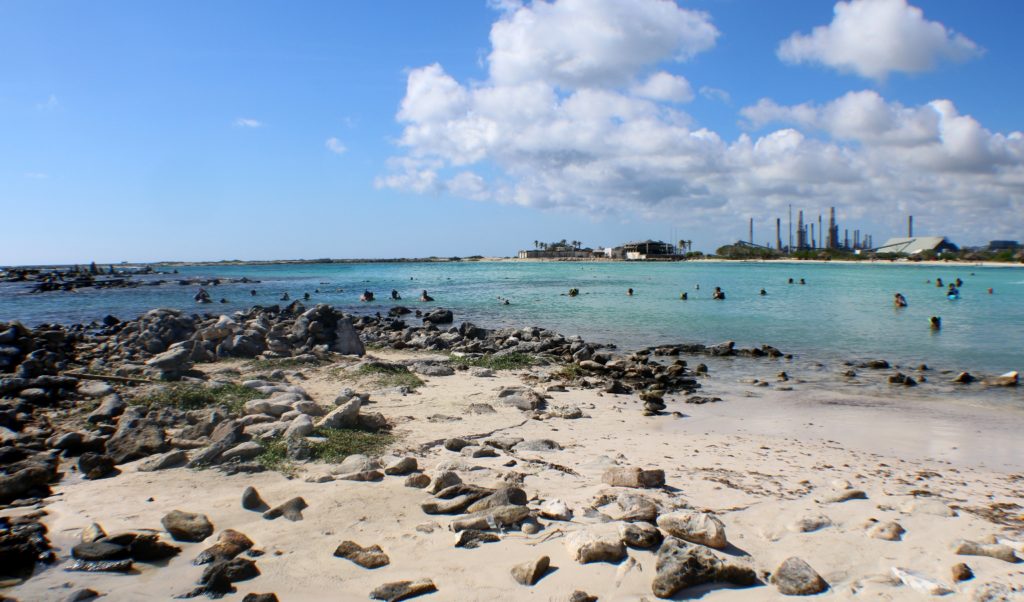
Here are some sights on our way back. Freemasonry Monument.
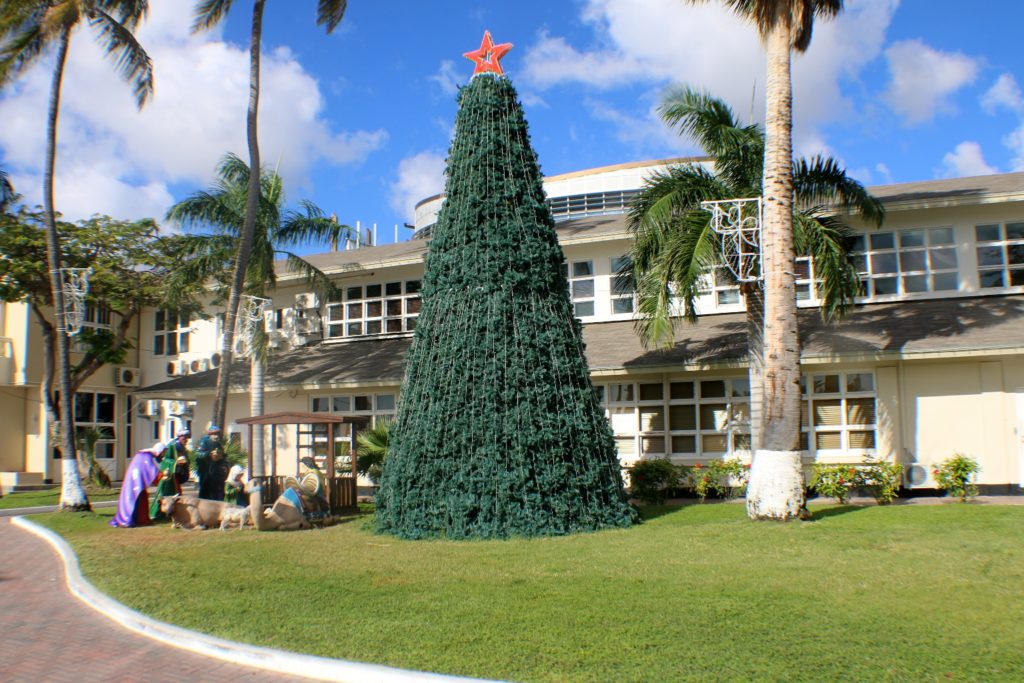
Of course, everyone wants to have a pic with the “I love Aruba” sign. 🙂
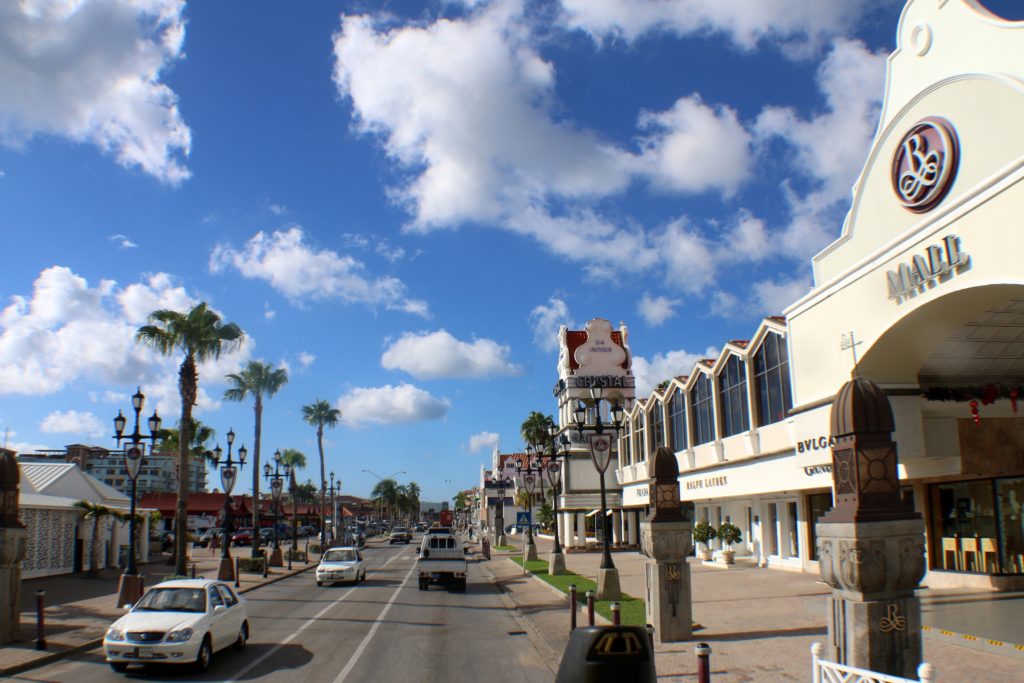
From Baby beach we were escorted back to the De Palm Tours office, where our tour had started. I would highly recommend this tour to get acquainted with native Aruba and some of its attractions. The tour guides were friendly and knowledgeable and the tour was simply a lot of fun.
